Chickens are fascinating creatures, and their eyes, even more so. Here are some amazing facts about chickens’ eyes that you may not have heard before!
Chickens Can See More Colours Than Us
Chickens are tetrachromatic. They can see the colours we see in (red, yellow and blue), but whilst we have three types of cones in our retinas, chickens have four, which allows them to see in ultraviolet light. This gives chickens access to a much wider range of colours and shades than humans.
Chickens Have a Third Eyelid!
Believe it or not, chickens actually have a third eyelid, on each eye! The third eyelid, called the nictitating membrane, horizontally draws across the eye which helps clean, moisten, and further protect the eyes from dirt. The nictitating membrane is transparent in appearance which means that chickens still have the ability to see, even when the third eyelid is closed.
They Can Use Each Eye Independently
Chickens are able to use each of their eyes independently, with a 300 degree field of vision (humans only have 180!), meaning that both of their eyes can focus on different tasks at the same time. This is also known as monocular vision, which amazingly already begins even before a chick’s arrival. When the chick is still in its shell, it turns towards the right to absorb any light and the left side of the shell is covered by their body. When the chick then hatches, nearsightedness develops in their right eye, which will allow the chick to search for food, as the left simultaneously develops farsightedness. This is to help the chick look out for any potential predators. You will probably notice this from when chickens tilt their heads when a hawk flies over.
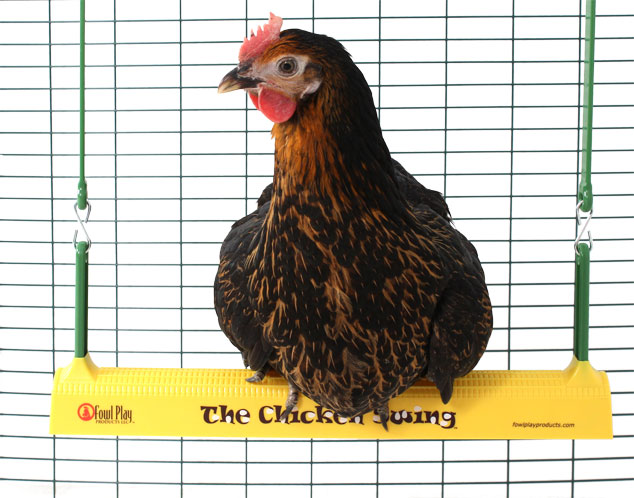
The Omlet Chicken Swing is the perfect toy for keeping chickens entertained!
Chickens Have Terrible Vision in The Dark
Night vision definitely isn’t their strong point! Having descended from dinosaurs all them millions of years ago, as opposed to being preyed on by them like other species, chickens had no need to learn how to run and hide in the dark. For this reason however, chickens today require protection at night because just like humans, they’re awake during the day and sleep during the night, and are highly susceptible to predators.
Chicks Have Amazing Eyesight From Birth
When chicks first hatch, they surprisingly have remarkable eyesight, in fact a lot better than humans. From the minute they hatch, chicks are able to detect small items such as grains of food and even have spatial awareness. A human baby however, lacks this ability and does not develop such skills until a few months down the line.
Chickens Rarely Move Their Eyeballs
Chicken eyes have a very limited range of motion and lack the ability to remain focused on an object whilst the rest of their body is moving. This is why you’ll often see chickens walking around, bobbing their heads, whilst facing onwards. It is not so much a case of chickens not being able to actually move their eyes at all, but rather their eyes cannot move quickly enough to process the image in front of them. Instead, chickens will tend to turn their heads when they want to gain better eyesight of something.
Their Eyes Have a Double Cone Structure
The retina of the eye is composed of rods and cones, the rods being to detect light-sensitive motion, and cones to see colour. As we found out earlier, chickens have more types of cones than us, hence why they are able to enter a fourth dimension of colour, which us humans can’t. A double cone retina structure means that a chicken’s eyes are more sensitive to movement. This is advantageous to chickens as it gives them a greater ability to detect motion, which is helpful when it comes to spotting a perceived threat.
Chicken Eyes Make Up 10% of Their Head Mass
That’s quite a lot, considering our eyes only make up for approximately 1% of our head mass! Although it may look humorous, there’s actually a good reason behind it. Having such large eyes helps chickens to see larger and clearer images as they are produced.
Chickens Can Sense Light Through Their Pineal Gland
Light reaches chickens through either their eyes, skulls, or skin, which activates the pineal gland in the brain. The pineal gland, also sometimes referred to as ‘the third eye’, is something else that makes chicken vision oh so interesting. A pineal gland helps chickens to sense daylight, or the lack of, even if they are unable to see with their eyes. This means that even a blind chicken is able to detect lighting or seasonal change!
They Have the Ability to Recognise up to One Hundred Different Faces
They say that elephants never forget but apparently chickens don’t either! Chickens are able to recognize up to one hundred faces, be it other chickens, humans or any other species. They can also amazingly decipher between their positive and negative encounters.
After a few interesting facts, we’re sure that you’ll now know a whole lot more about the amazing subject of chickens’ eyes, that’ll be bound to get you wondering just what’s really going on through the eyes of your chickens!
This entry was posted in Chickens

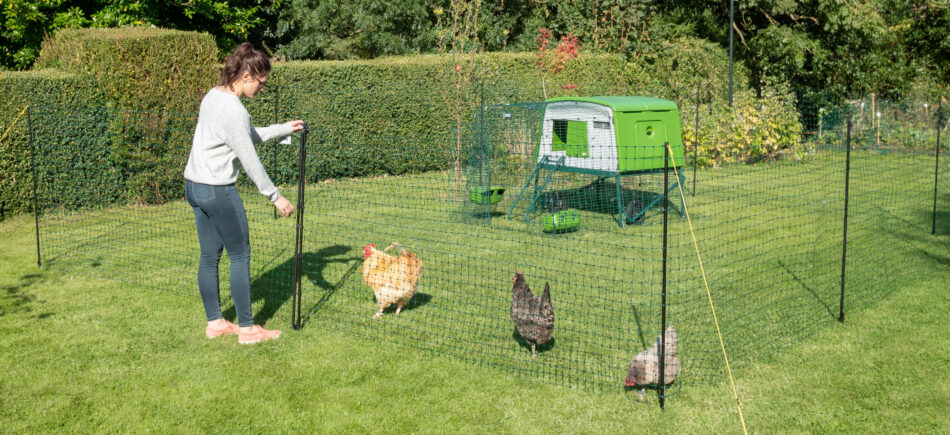
Each year your chickens will experience “moulting”, which is the process of shedding their old feathers and donning new feather skirts. Most hens will slow down their egg production during this time to redirect their energy to the arduous task of growing new feathers. We’ll show you how to help your chickens through a moult, and what to expect throughout the process.
When do chickens moult?
Chickens begin moulting early on in life. In fact, chicks moult frequently during their first few months of life as they shed their baby fluff in favour of their adult feathers. Chicks will moult a total of 4 times:
- First moult within the first 1-6 weeks of age
- Second molt around 7-9 weeks of age
- Third molt around 12-13 weeks of age
- Fourth and final moult around 20-22 weeks of age
By the end of this fourth moult, your chicks’ tail feathers will begin to come in – making cockerels easier to spot.
Once they reach adulthood, all chickens will follow a natural annual moulting cycle that occurs toward the end of summer or the beginning of autumn. The need to grow new feathers will be evident – your hens’ feathers will appear dull or bleached out shortly before they moult. Occasionally, chickens can go through a moulting cycle outside of this timeframe as a response to stress.
How do you know if your chicken is moulting?
While chickens can lose random feathers any time of year due to rough play or preening, minor feather loss is not considered moulting. Molting is accompanied by obvious signs like:
- Patches of missing feathers (some may be large)
- A dishevelled appearance
- Dull combs and wattles
- Irritability
- A sudden drop in egg production
- Increased appetite
The moulting process usually begins with the feathers at the chicken’s head, moving toward the breast and legs, and finally to the tail. By the time the tail is bare, the head feathers will have begun to regrow.
If a chicken is losing feathers and doesn’t grow new ones, you’ll want to do a quick hen health check, as sometimes mites or illness can be to blame for unexplained feather loss. If you suspect an issue other than a seasonal moult, be sure to contact your veterinarian.
What to give chickens to help with moulting
Moulting is not an illness, so while it may not require treatment, your hens will appreciate some extra nutrition during this time. Their taste for protein will increase in response to the extra energy needed to grow new feathers – and they’ll need lots of it.
To add extra protein to the chickens’ diets, give them a feed that is at least 18% protein. If you have a chicken tractor, move your flock to a spot with the most insects. Or, you can use chicken fencing to keep your hens in areas that are dense with bugs for a fresh protein source.
You can also add some apple cider vinegar to your hens’ water, and offer fresh herbs like oregano to give their immune systems a boost. Chicken supplements are an easy way to add nutrients to your flock’s feed, and allowing them to free range as much as possible will help them peck out what their bodies need the most.
What to do when your chickens are moulting
Moulting varies between each hen, but you can expect a full moult to take anywhere from 4-16 weeks to be completed. Try to avoid handling your chickens during this time, and resist covering their bald patches with chicken jackets or clothing. Your hens will be tender and itchy while they’re growing new feathers, so handling them or covering their skin will add unnecessary irritation.
Not all hens will cease egg production for the entire duration of a moult, but it’s normal if they do. It’s normal to expect your hens to stop producing eggs for several weeks while they’re moulting. Flocks will moult together on the same schedule, so be prepared to be short on eggs for a while. Unwashed eggs will keep in the refrigerator for several weeks, so start saving eggs toward the end of summer to head off a temporary egg shortage.
Having an easy-to-clean chicken coop and chicken run are both helpful during a moult – your hens will shed feathers both day and night, leaving feathers everywhere. Dump or rake out shed feathers routinely to keep your flock’s area presentable and to give your hens plenty of dust to bathe in, which will aid in the moulting process.
Keep your flock’s feeders and waterers topped off during their moult, and check on their progress daily. Most hens will go through their cycle without incident or need for human intervention, but keep an eye out for:
- Excessive lethargy from hens
- Bleeding or scabbed over patches
- Difficulty regrowing feathers, or patches of missing feathers even after new ones have grown in
Before you know it, your flock will have ditched their dull, dingy feathers and will emerge dressed in their new, polished plumage just in time for winter.
Molting with Omlet
The annual moulting cycle doesn’t have to be a chore for you and your chickens. Whether you house your hens in our Eglu Cube chicken coop and Walk In chicken run, or one of our chicken tractors, our expertly designed products make it easy for you to help your hens through a moult so that they can get back to feeling, and looking, their best.
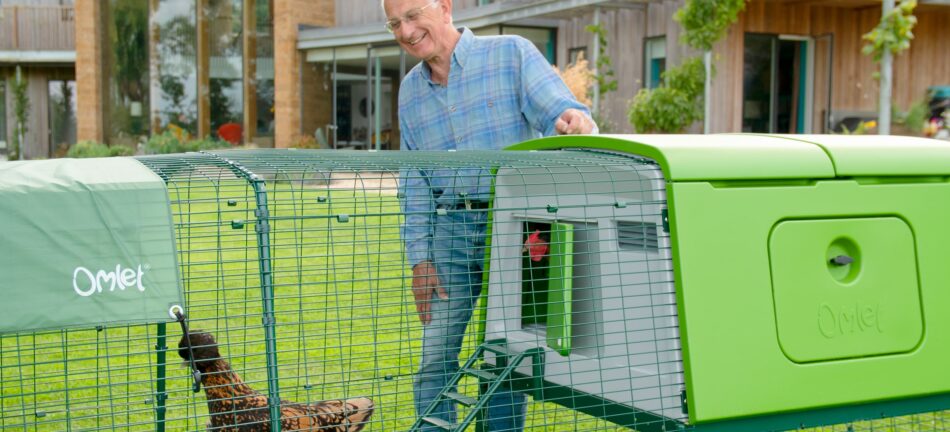
This entry was posted in Chickens
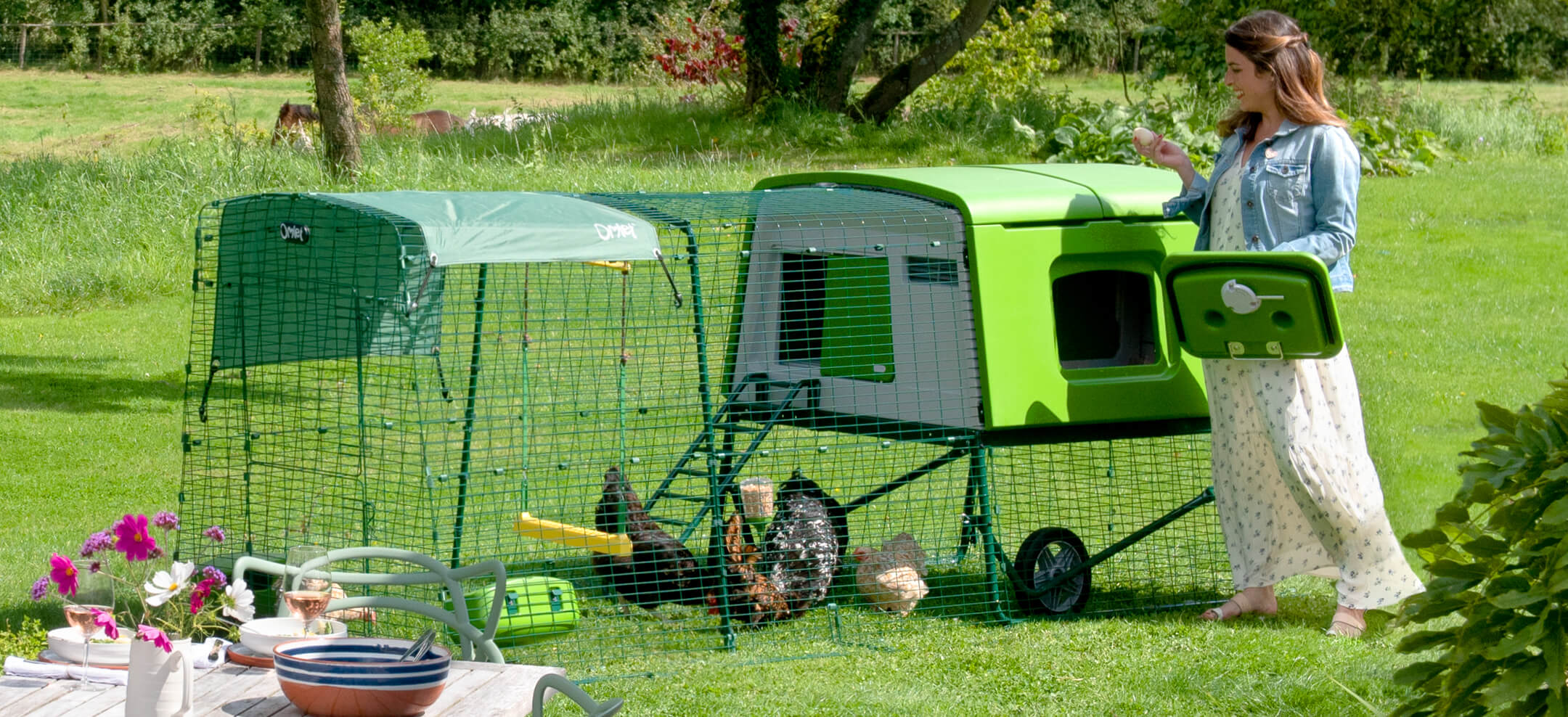
The Eglu Cube Chicken Coop will keep your chickens content all year round!
World’s Heaviest Chicken
The heaviest chicken breed, White Sully, was developed on a farm in California. It’s a hybrid breed of large Rhode Island Reds and other heavy breeds. The largest chicken ever recorded was a rooster called Weirdo, and he weighed just over 10kg (22 lb). It is said that he was so aggressive that he killed two cats during his lifetime and seriously hurt a dog that came too close to his territory.
World’s Oldest Chicken
The current world record holder is Muffy, a Red Quill Muffed American Game hen, who died at the age of 22 in Maryland, USA. One of the more famous old chickens was a Red Pyle chicken called Matilda from Alabama, USA. She was the first hen to receive the title of World’s Oldest Living Chicken from Guinness World Records, and lived for 16 years. Veterinarians said it was likely she lived for so long because she was kept in her owners’ house as a pet, and never laid an egg in her life.
World’s Heaviest Egg
The heaviest egg ever recorded was laid by a White Leghorn chicken in New Jersey, USA in 1956. It weighed 454g (16 oz), and had both a double yolk and a double shell.
World’s Biggest Egg
The heaviest egg was however not the biggest egg ever found. Tony Barbouti in Eastwood, Sussex, once found an egg in his coop measuring 23cm (9.1 in) in circumference. It only weighed just over 161g, but certainly gave Barbouti a shock! He later said that the hen was noticeably shocked after having produced the egg, and she walked a bit funny for a few days, but recovered completely.
World’s Longest Flight
Chickens are not known for their ability to fly. In fact many mean that they can’t technically fly, but only jump high and flap their wings to stay in the air. The longest flight of a chicken that has been recorded is 13 seconds. A different record for the longest distance flown is just under 92m (301 ft). Pretty impressive for a supposedly flightless bird!
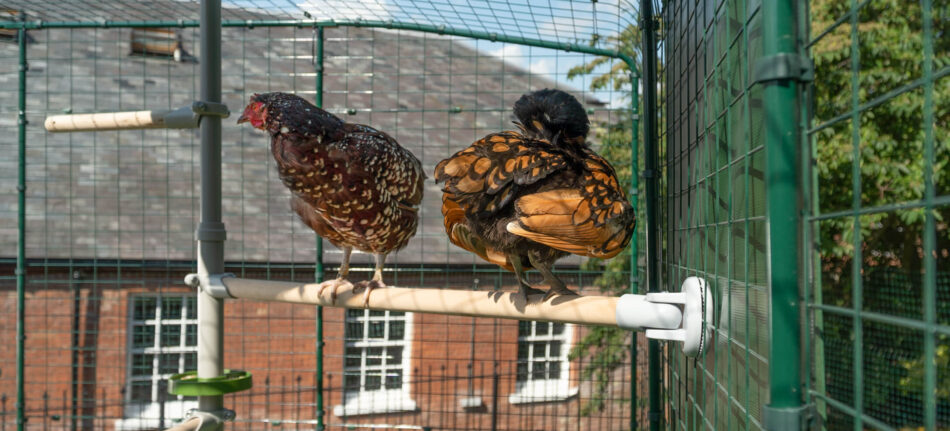
World’s Most Prolific Layer
A Prof. Harold V. Bieller conducted experiments with chickens in the late 1970s at the College of Agriculture, University of Missouri. The highest rate of egg-laying he found was by a White Leghorn in 1979. She laid a whopping 371 eggs in 364 days!
World’s Most Prolific Mother Hen
Northern Irish farmer John Dolan has got two hens that have made it into the Guinness Book of Records. His hen Sally entered by having two sets of chicks in just 55 days, the latest of which produced 11 live chicks from 12 eggs. Chickens normally stay with their young for at least three months, but Sally started laying again after only 21 days. John’s other record breaking chicken Marmalade made it into the Book of Records by hatching a remarkable 107 chicks in two years!
This entry was posted in Chickens
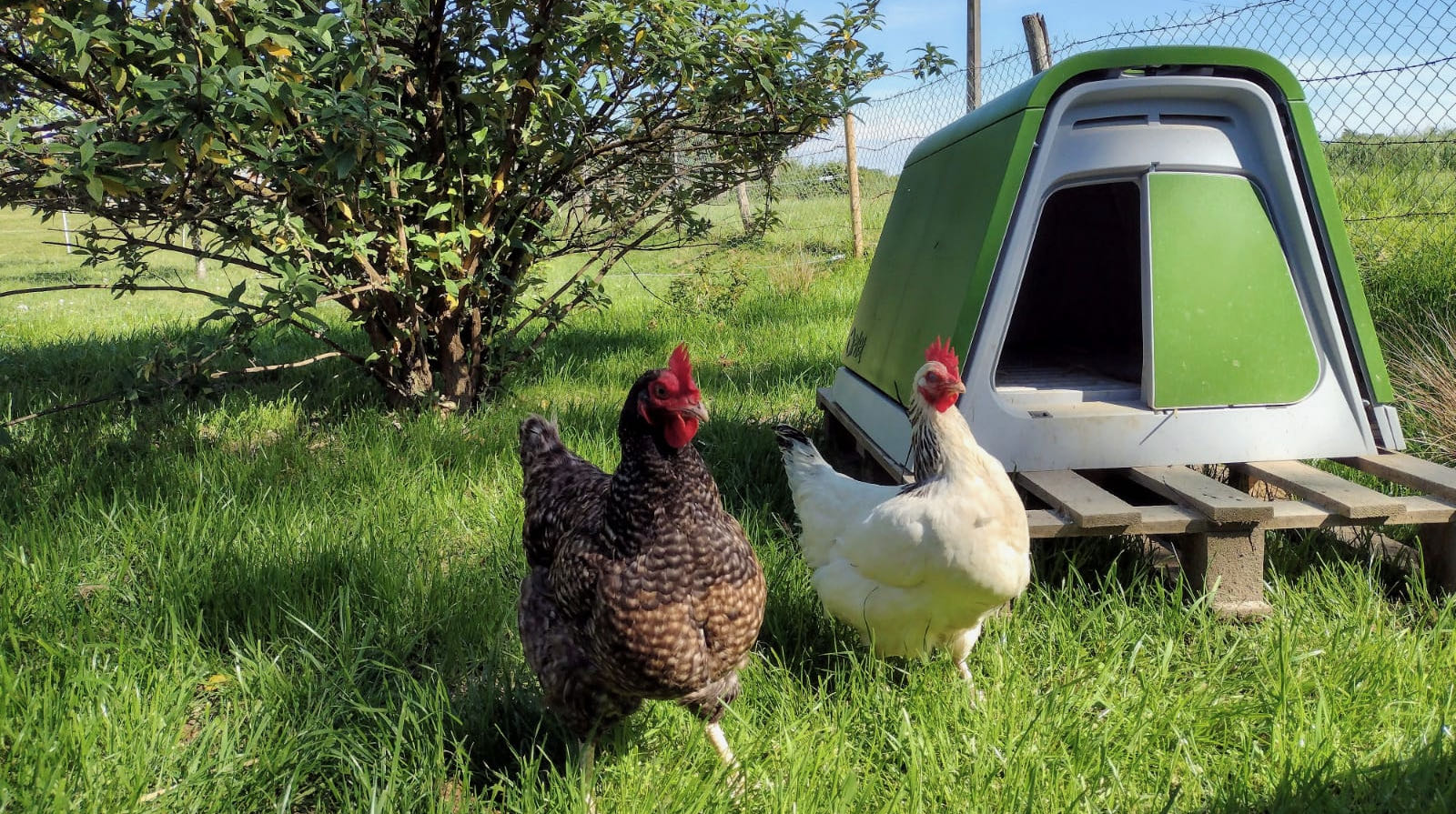
Before introducing new birds to an established flock, they should be quarantined. You will also have to quarantine chickens that have fallen ill or shows signs of illness.
The reason for separating new birds from the established flock is eight parts sensible to two parts paranoia. If you source the new chickens from a reputable supplier or have hatched the birds yourself, there is little chance of the birds harbouring illnesses. However, the potential problems you are guarding against are not easy to spot. Chickens may have internal or external parasites, or the bacteria and viruses that cause disease may be lurking out of sight.
Quarantine significantly lowers the risk of the new chickens spreading parasites or infection in your established flock. In the age of Covid-19, the idea of quarantining has negative associations with isolation and inconvenience. With new chickens, all you’re doing is giving them some space away from the main flock. Other than that, it’s chicken business as usual!
What is quarantine, and when should I quarantine my flock?
Quarantine simply means separating one or more chickens from the rest of the flock. The aim is to minimise the danger of illness spreading between ill and/or new chickens and the existing flock.
All new birds should be put into quarantine. Chickens bought at a show or fair will have been in close proximity with lots of other birds. Chickens from reputable suppliers are not immune to disease either, and even a new-hatched chick may harbour illness, as certain bacteria can penetrate eggshells and infect unhatched birds.
Why do chickens need quarantining?
Bird diseases and parasites spread quickly, and by the time you spot the symptoms, it’s often too late to prevent the other chickens from falling ill. Stressed birds are particularly prone to illness, and a new hen will always be a stressed hen. There’s nothing you can do about this, as it’s a symptom of moving from the world she knew previously to the world of your backyard chickens.
A bird that falls ill needs isolating from the rest of the flock to minimise the risk of the illness spreading. If the issue is parasites – lice, fleas or worms – by the time you spot the problem it will probably be present in every bird, so in these cases, you need to buy the appropriate parasite treatment rather than quarantining single birds.
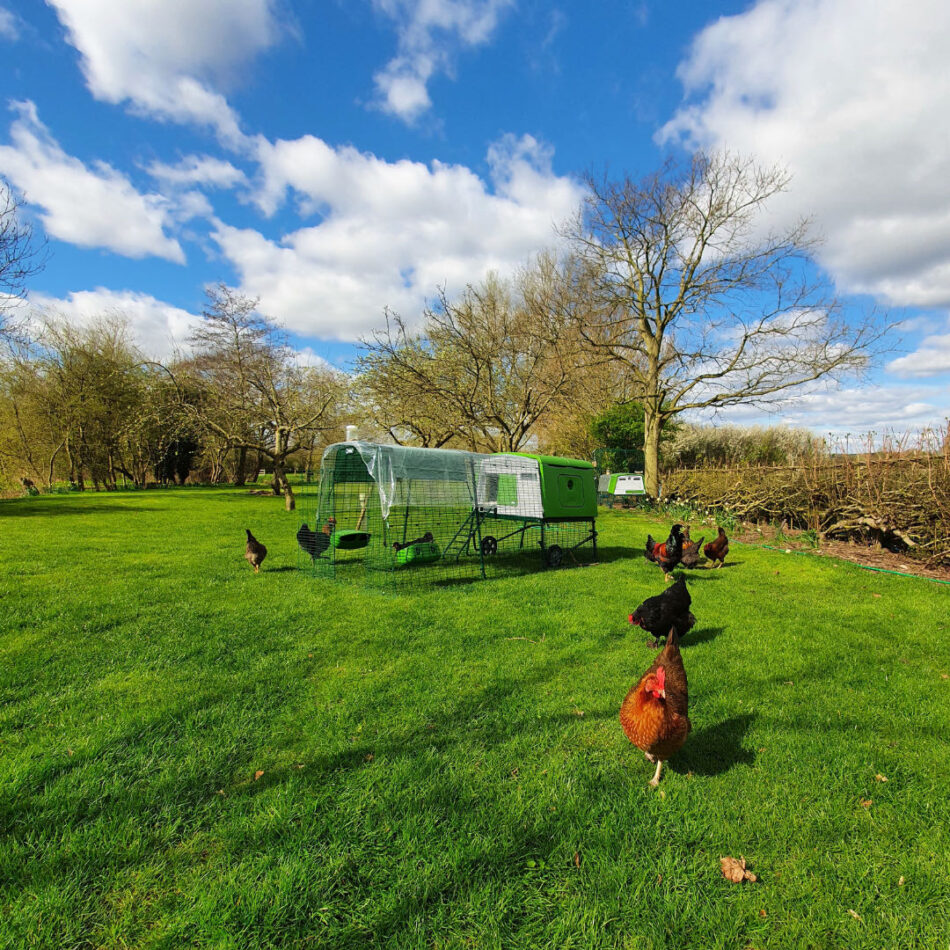
How long do new chickens need to be quarantined?
New birds should be quarantined for at least four weeks. If there are any illnesses, they will show in the first week, following the stress associated with the move. Give the new birds a thorough health check every few days.
In the final week of quarantine, keepers with a larger existing flock often introduce an older bird – perhaps one that has stopped laying – into the quarantine shed. If at the end of this week the introduced hen is healthy, all is well. If there is any disease lurking unseen, the older bird will begin to look unwell. This is the so-called ‘Canary in the mine’ method, and not everyone will be happy putting an older bird at risk. However, the main point is that you are 90% sure that there is no problem in the quarantined flock by this stage.
Note: bird flu, or avian influenza, has an incubation period of around 21 days, so a hen that was infected on the day you brought her home will not show symptoms for three weeks. This is one of the reasons why the quarantine period is so long.
Setting up a quarantine area for new chickens
There is a simple checklist that gives the quarantine the best chance of being successful:
1. Give the new birds a physical check, looking for signs of lice or fleas. Check the consistency of their droppings and their general posture, referring to our Easy Health Checks Chicken Guide for reference.
2. Make sure the enclosure and coop have everything the new birds need, including a roosting perch, an egg-laying box, fresh food and water, and shelter from the elements.
3. Ensure that no feathers, sawdust, dander, food or water from the quarantined new birds enter the main flock’s enclosure.
4. Don’t wear the same shoes and clothes when tending the healthy and the ill birds. Infection can spread quickly, especially on your hands and the soles of your shoes.
5. The new birds should be kept as far from the other chickens as possible. Ideally, they should be at least 10 metres (33 feet) from the main flock, and downwind as much as possible. However, this will not always be practical, and simply keeping the new chickens in a separate enclosure will be as far as many owners can go. If there is an enclosed building to keep them in, that’s perfect. Keeping the new birds upwind of the existing flock is even more important in these close-proximity set-ups.
What to do if the quarantined chickens fall ill
If any of the new birds become ill, you will need to identify the illness. If you are uncertain, call in expert help to assist with the diagnosis. Depending on the problem, the new chickens will need to be treated and isolated for another month or so. If the illness turns out to be avian flu or another lethal disease, the birds will have to be culled. In the case of the bird flu, check out our What You Need to Know About Avian Flu in 2020/2021 article for the latest advice.
Quarantine of new hens is a better-safe-than-sorry routine that ensures health and happiness in your ever-changing flock of chickens. It also has the advantage of acclimatising newcomers to the sights and sounds of your garden before they mingle with the existing flock.
This entry was posted in Chickens
As we head into summer and the weather begins to warm up, you might be wondering how you can help your chickens keep cool in the hotter months. Get prepared now and catch up with our previous blog posts on keeping happy and healthy hens during summer below…
7 Ways to Help Your Chickens Stay Cool This Summer
Did you know, that chickens can’t sweat? Instead, chickens use their legs, combs and wattles to lead heat away from their bodies. They also pant and spread their wings in order to get some air through their feathers. But what can you do to help?
From water to dust baths, here’s 7 simple but effective tips to help your chickens stay cool in the hot weather…
10 Things Not to Do in Summer if You’re a Chicken Keeper
From 7 things you should do, to 10 things you shouldn’t do this summer if you’re a chicken keeper! This advice is just as important as the tips above for ensuring a comfortable environment in the warmer weather, and also preventing your chickens from overheating.
How to Protect Your Chickens from Red Mite
Red mites, or Dermanyssus gallinae, are without a doubt backyard chicken keepers’ worst enemies! They are nocturnal creatures living in cracks and crevices of the coop, and they only come out at night to feed on chicken blood. Most long term chicken keepers will have encountered these parasites, and can confirm that they are more destructive and difficult to get rid of than all other pests combined.
Learn how to treat and prevent red mite infestations in your coop to keep your chickens happy this summer.
How the Eglu Keeps Chickens Cool
Traditionally chicken coops and rabbit hutches have been made from wood. This has its advantages: it’s an easy material to work with, it’s customisable and it looks attractive. However, when it comes to coping with the weather, it can leave a lot to be desired. Wood is not a very good thermal insulator, meaning if it’s hot outside the temperature will transfer through to the inside quickly.
If you’re using a wooden coop, it might be a good time to consider upgrading to a better insulated and ventilated house before the worst of the hot weather hits. Learn how an Eglu keeps chickens cool in this blog post.
This entry was posted in Chickens
There are several reasons why chickens make the best pets for kids. From teaching responsibility, to learning where food comes from, backyard chickens can provide children with valuable life skills and lessons that can’t be replicated by other pets. Discover how adding a flock of hens to your family will broaden the minds of children of all ages, and give them a deeper understanding and appreciation of the wonderful world around them.

Daily chicken care teaches responsibility
Chickens are fairly self-sufficient pets, but they still require some daily care. These tasks are perfect for the young members of your family, and will teach your kids the value and satisfaction of a job well done. The reliance a flock has on their keepers also reinforces the concepts of responsibility and integrity.
Feeding and watering chickens
Feeding chickens is fast and simple, and can be a fun childhood chore. Let your kids measure out chicken feed to add to the flock’s feeder, and allow them to toss chicken scratch as a treat. Chicken waterers can be filled with a garden hose or watering can, which may be a task best suited for older children.
Collecting eggs
Gathering eggs is a favourite activity for adults and children alike. Make sure your hens’ nesting boxes are easy for your children to access, and teach them how to handle eggs carefully to avoid drops or cracks. Let your kids choose their own or decorate an egg-collecting basket to personalise their experience.
Cleaning the chicken coop
An easy to clean chicken coop is a necessity for chicken keepers of all ages, but having a plastic chicken coop that can be sprayed and wiped clean in minutes allows children to get in on the cleaning action. Chicken coops like the Eglu Pro have removable droppings and nesting box trays for easy cleaning, so your children can clean designated coop components during each cleaning session. The sparkling clean results are an instant reward for your children’s efforts.
Opening and closing the chicken coop
Securing chickens at night is a big responsibility, so this should be left to older children — but opening the coop in the morning may be the perfect way for younger children to start their day. Or, if you’re looking to introduce your children to innovative products that streamline tasks, the Smart Autodoor can be accessed and operated via a mobile app from anywhere in the world. Help your children understand the importance of and how to determine your flock’s schedule by talking about time, amount of daylight, and the potential for predators at dawn and dusk.
Handling chickens teaches gentleness and patience
Chickens aren’t hatched with an innate tolerance of being handled. Handling chickens requires gentleness and patience, both of which are excellent lessons for kids to learn and put into practice. If you’re starting with chicks, make sure children understand that chicks are fragile, and if squeezed or dropped may sustain injuries. Regular interaction will help chicks grow accustomed to their young owners, and will build confidence in your children’s chicken-handling abilities.
Fresh eggs are perfect for beginner culinary creations
Children of all ages can learn how eggs are incorporated into different dishes and meals. Young children can crack fresh eggs for scrambled egg breakfasts, while older children can crack them into cake or cookie recipes. For budding chefs, you can help your child try their hand at poached eggs or a frittata, or master the art of making the perfect meringue.
Appreciation for where food comes from
Many children don’t have the opportunity to see where their food comes from. But thanks to the possibility of keeping chickens in even an urban backyard, kids can be exposed to the process of egg production. Teaching children the biological process of laying eggs, the supply and demand of food, and how nutrition benefits the production of hens are all valuable lessons that can be observed in a backyard flock. You can also show your children how to store fresh eggs to reduce waste or to prepare for the lack of eggs during your chickens’ annual moult.
Relaxing back garden companionship
Unless you’ve witnessed it yourself, it’s hard to describe the serenity that comes from watching chickens peck the ground. Children aren’t exempt from this phenomenon, and it’s a sight to behold when your child is happily playing in the backyard surrounded by a flock of gently clucking hens. Your flock will help control pests in your backyard, making it more enjoyable for your children to play in the grass, while also providing calm companionship while your kids play. Have your children bring fresh fruits or vegetables to the flock and watch them become the instant favourite. Children of all ages can delight in hand-feeding their hens fresh, nutritious treats.
Chicken handling hygiene
Always teach your children hygienic chicken handling techniques. When interacting with chickens, keep the following in mind:
- Always wash your hands and teach your children to wash their hands thoroughly after handling eggs, chicks, or chickens, or after cleaning the coop.
- Don’t allow your children to kiss their chicks or chickens. We know it’s tempting, but this well-intended gesture is not worth the risk of illness.
- Contact your veterinarian right away if any of your chickens appear sick.
Omlet, your children, and your flock
As a parent, you want what’s best for your children. And as chicken experts, we design what’s best for flocks and their caretakers — no matter their age. Our chicken coops are easy to access and clean, and our Walk In Chicken Run features stable-style doors for convenient access. And to help your busy schedule, our Smart Autodoor offers automation for your flock’s schedule, without losing the lesson of the importance of securing chickens in their coop overnight. Discover how fun and easy chicken keeping can be, and learn all about these amazing animals along with your children. With Omlet, flock raising can be a truly enjoyable family endeavour.
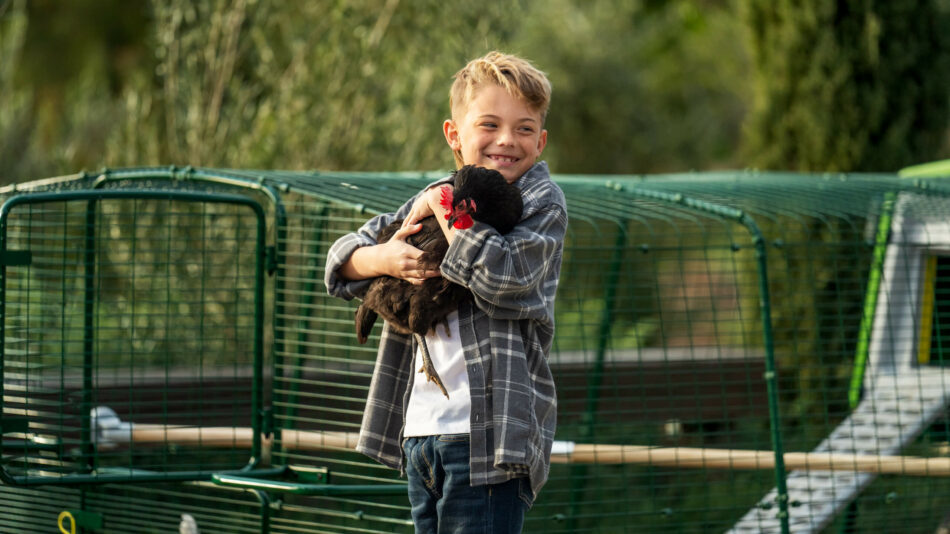

This entry was posted in Chickens
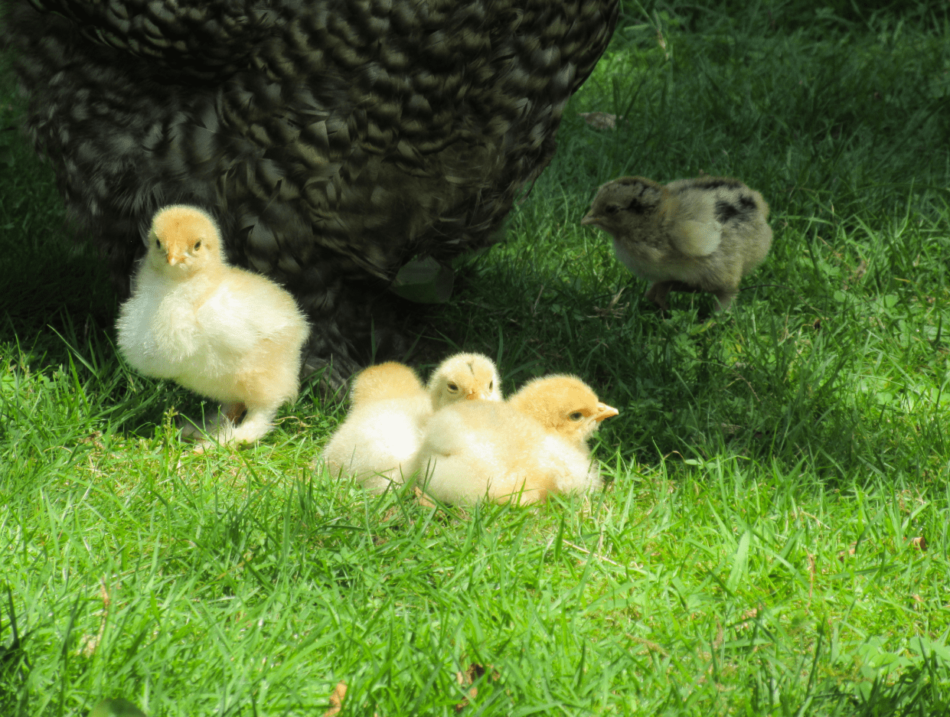
Chickens pretty much take care of themselves from an early age. However, there are certain things you need to avoid if you want your baby chickens to get the very best start in life.
In this article, we present six easily preventable pitfalls.
1. Not having the brooder ready before the chicks arrive
You need to sort out the chicks’ housing – known as a brooder – before the birds arrive. Otherwise, there will be nowhere to put them, and that would be disastrous.
You can buy brooder boxes made specifically to keep chicks in, or you can make a DIY brooder using a cardboard box or plastic bin with holes in the side. Only choose the DIY avenue if you’re 100% confident you know what you’re doing.
The important thing is to keep the birds in a warm and well-ventilated space, but protected from drafts. As a rule of thumb, allow two square feet per chick – this is more than enough space for fluffy newcomers, but remember you will also need to make sure they have enough room when they get bigger – which they will do very quickly!
A chicken wire covering for the top of the brooder is advisable. Chicks can easily ‘fly the nest’ if the sides of the brooder are less than 45cm high. Older chicks need roosting poles for perching when they sleep, and will appreciate the inclusion of these in the brooder.
2. Not getting the temperature right
Too much or too little heat can kill chicks, so this is another life-or-death issue. The chicks need to be kept in a temperature of 35 °C (95 °F) in their first week. The heat should then be reduced slightly every five days or so until you’ve reached room temperature.
The source of heat is an important detail too. A heater designed explicitly for coops and aviaries is the best option, or a red heat bulb. You should not use a white heat bulb, as these produce glare that keeps chicks awake at night. This will make them irritable, as a result of which they may start pecking each other. Standard light bulbs are not suitable either.
Even the correct type of heater or bulb will need some adjusting in terms of where it hangs, and how high it is from the ground. Watch how the chicks behave in relation to the heat source. If they crowd together directly under the bulb or in front of the heater, it means they’re too cold. Lower the heat source or add an additional one, depending on the situation.
If the chicks cluster away from the heat source, they’re probably too hot. In this case, the heater or bulb will need to be moved further away, or its temperature reduced slightly. The chicks’ behaviour may change as they grow larger and the space becomes more crowded, so watch them carefully each day.
3. Using the wrong type of bedding
With chicks, it’s not a case of “any old bedding will do”. Use wood shavings or other non-toxic, absorbent material recommended for baby chickens. Avoid newspaper or shredded magazines, and don’t use aromatic, oily woods such as cedar. A 2.5cm layer of this bedding will be enough. If you omit the bedding, the chicks are in danger of slipping and sliding on the surface, which can lead to an injury called “splayed leg”, which is a life-threatening condition. The bedding should be changed at least once a week to prevent sticky droppings from accumulating.
4. Getting the wrong type of feed
Starter feed – in the form of either ‘crumble’ or ‘mash’ – is the essential basis of a chick’s diet. If your chicks have been vaccinated against coccidiosis, you will need to buy an unmedicated feed. The starter feed will double as a ‘grower’ feed, intended for chicks for up to 16 weeks. Some varieties, however, are for the first four weeks only, after which you can switch to a ‘grower’ feed.
Chicks will also enjoy a bit of fresh food as a treat, either vegetables or worms and bugs. These should never replace the starter feed mix, however. Chicks only eat as much as they need, and there’s no danger of them over-eating. So all you have to do is make sure the feeders are topped up at all times.
Like adult birds, chicks require grit to grind up their food. It needs to be sand grain-sized rather than the small pebbles and shell fragments that grown birds require.
The chicks will need food and water dispensers. Buy custom-made ones rather than improvising with dishes and trays: these inevitably end up fouled and/or spilt. Very young chicks will need to have their water changed at least twice a day, as they very quickly dirty it.
5. Forgetting to perform daily health checks
A chick health check is a simple case of looking at the young birds and making sure they look as lively and alert as usual. A chick that sits alone and looks lethargic or fluffed up when the others are active may be unwell. An ill chick will deteriorate very quickly and die.
The most frequent health issue encountered in young chicks is ‘pasting up’. This is when their droppings become encrusted on their bodies, preventing them from pooping. An affected bird can be cured by wetting the pasted-up area with warm water and wiping it clean. You may occasionally have to use tweezers to remove a plug of poo from the vent. The chick will need holding securely during this rather delicate and undignified procedure. If left blocked, a pasted-up chick could quickly die.
Note: if there is a thin dark strand hanging from a chick’s rear end, this is NOT pasting up. It’s the dried up umbilical cord that attaches the bird to its yolk inside the egg. It will fall off in a few days.
6. Moving chicks outdoors too quickly
Chicks can spend up to three hours a day outdoors once they’ve reached two weeks, as long as there is someone to supervise them. A large wire cage or portable run will do the job. The birds should only be placed outside if it’s at least 18 °C (65 °F), dry and not too windy. They will need food, water and shade.
Note: If you take the chicks outdoors before two weeks old, or if you leave them for more than three hours, they may catch a chill or sunstroke (depending on the prevailing weather). These shocks to the system can kill a small bird.
By 12 weeks, the young hens are old enough to move into an Eglu chicken coop and run. They will still be too small to negotiate the roosting bars, so these should be removed until the chicks are big enough to perch and walk across them safely. If you have an Eglu Cube Chicken Coop, the chicks may have to be lifted in and out of the roosting and laying area, as they often struggle with the ladder. This can be converted into a ramp during these early weeks, to make things easier for the hens.
The roosting area of the Eglu – or any other walk-in coop and run set up – should have lots of chicken bedding to ensure the hens stay warm at night. The bedding should also be replaced at least twice a week.
Chicks soon pick up the dos and don’ts of life from your other birds. A lot of their behaviour, remember, is based on instinct, so as long as you give them the right environment, nature will take care of the rest.
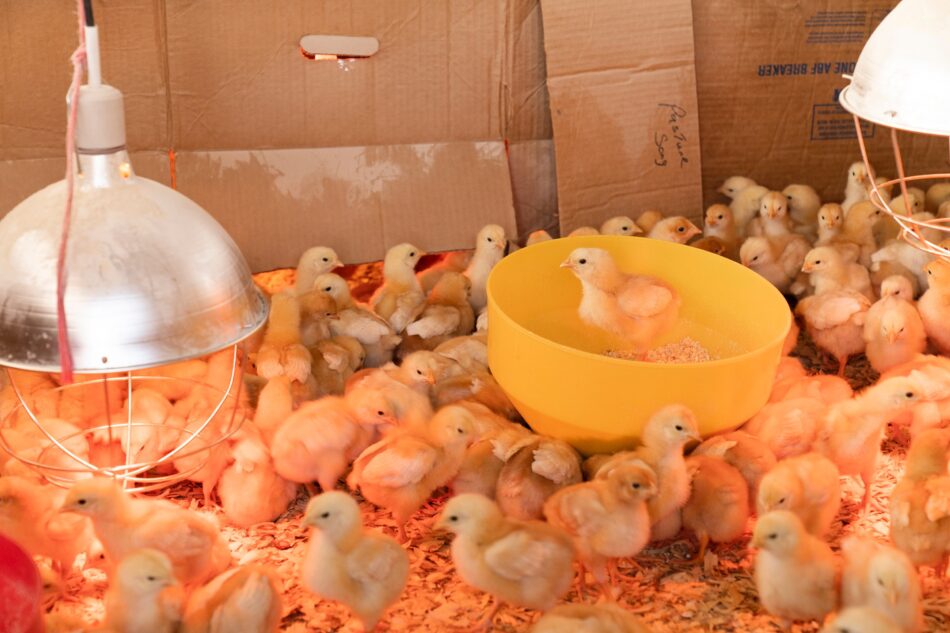
This entry was posted in Chickens
Pride of Omlet series is a collection of amazing stories which shine the spotlight on extraordinary pets and share their selflessness, bravery, talent and compassion with the world.

We have been lucky enough to collect some wonderful stories of your extraordinary pets and share them with you for 10 weeks! Here is a summary of the stories that you can read again and find directly on our Blog.
Pride of Omlet: Stand Up for Disabled Animals

Jerry’s a cheeky, playful and boisterous rescue dog from Romania who can do a handstand! He landed on his feet when Shena gave him a home and inspired her to start a rescue centre specialising in disabled animals. Read the story here!
Pride of Omlet: The Constant Companion
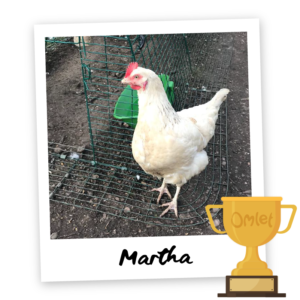
Martha’s humans Nicola and Ben bought chickens to bring joy to Julia, their mother who they cared for at home. The family could never have imagined that a chicken would become a caring companion to Julia in the advanced stages of dementia. Read the story here!
Pride of Omlet: Free Support
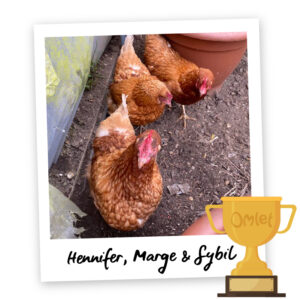
Once caged battery hens, Hennifer Marge and Sybil now work free-range with their human Jonathan, transforming lives for offenders at the Rosemead Project. Jonathan (support worker and chicken champion) believes the hens have the power to unscramble tricky social situations. Read the story here!
Pride of Omlet: A Perfect Match
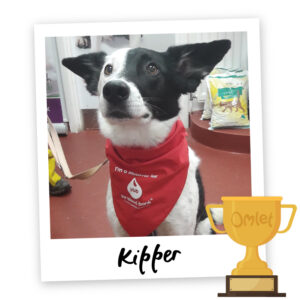
On paper, Kipper wasn’t exactly what Angela wanted. After years of behavioural challenges, he’s become the best-behaved blood donor and saved over forty dog’s lives. Kipper’s turned out to be Angela’s perfect match. Read the story here!
Pride of Omlet: Teachers Pet
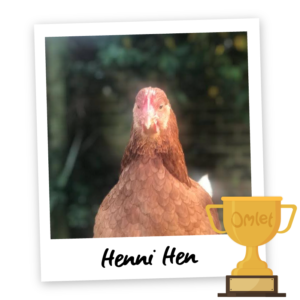
Henni Hen is a teaching assistant by trade. A cute and cuddly chicken who loves children. She follows in the footsteps of her bubbly humans, Hamish and Verity. Read the story here!
Pride of Omlet: Mipit Makes Sense

Mipit is a Mental Health Assistance Dog for his human, Henley. Mipit keeps Henly alive and independent. Who wouldn’t love a dog that can put out your recycling, answer your phone, and be your best friend, come rain or shine? Read the story here!
Pride of Omlet: Perfect Peaky
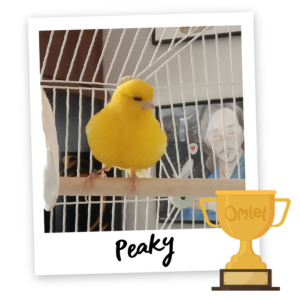
At the tender age of one, Peaky is already a retired filmstar. He had lived in a cage his whole life, released only to perform. When Joana and Fergus took him home, he was a fluffy, yellow bundle of nerves. But they are determined to help Peaky, their cute little canary companion, to come out of his shell. Read the story here!
Pride of Omlet: Saving Sophia’s Life

When you’ve grown up with animals, home isn’t home without a pet. Bringing Harry home was lifesaving for both him and his humans, Sarah and daughter Sophia. Harry has a special gift. He’s a unique epilepsy monitor, and he’s saved Sophia’s life countless times. Read the story here!
Pride of Omlet: Buster’s Beard

Buster was destined to chase balls on the beaches of Barry Island. He’s a lovable labradoodle with big brown eyes and a long beard. A thinker with a playful nature, he’s co-authored a children’s book with his human Natalie to bring Autism Awareness to all. Read the story here!
Pride of Omlet: Brave Bunnies

It’s hard to describe how frightened Pixie the rabbit was when the RSPCA rehomed her with an experienced rabbit owner. Eighteen months on, cheeky little Pixie lives in the lap of luxury and is learning to be loved by her adoring human, Wendy. Read the story here!
This entry was posted in Budgies
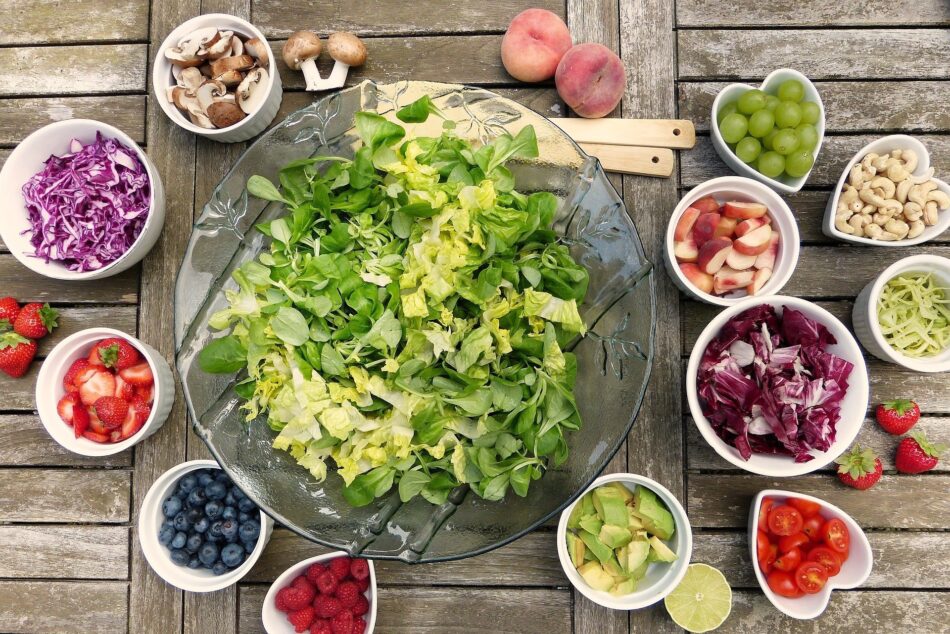
Some pets, including rabbits and guinea pigs, are naturally vegan. Hamsters and gerbils, although omnivorous, can thrive on a vegan diet in which the protein content is supplied by plants and vegetables. Others, including omnivorous dogs and out-and-out carnivore cats, cannot be easily pleased on meat-free diets.
All animals need to have their nutritional needs satisfied. But this does not mean you can’t have a vegan dog. Vegan cats, though, are a lot trickier.
Can my dog have a vegan diet?
 If you were to meet a species of animal for the first time and had to make an accurate guess about its diet, you would get lots of clues by looking at its teeth. The teeth of a dog, like the teeth of a bear, proclaim loud and clear that this animal is an omnivore – that is, one that eats both meat and vegetables. If you think of your dog as a domesticated wolf, you get a good idea of its natural diet.
If you were to meet a species of animal for the first time and had to make an accurate guess about its diet, you would get lots of clues by looking at its teeth. The teeth of a dog, like the teeth of a bear, proclaim loud and clear that this animal is an omnivore – that is, one that eats both meat and vegetables. If you think of your dog as a domesticated wolf, you get a good idea of its natural diet.
However, as the panda proves, a supposed meat-eater can sometimes get by perfectly well on a vegan diet. A panda’s teeth are similar to any other bear’s – long canines for meat-eating and molars for grinding vegetation. And yet pandas don’t eat anything other than bamboo. So, if a bear can be vegan, does that mean you can have a vegan dog?
The answer is yes – but it’s a yes with lots of small print! A dog requires a diet that contains the fats and proteins it would get from meat. It is dangerous to ignore this basic need and simply feed your pet with whatever you please. Some dogs have delicate stomachs at the best of times, and a low-fat, high-fibre diet can cause potentially life-threatening problems. A diet that excludes meat should never be fed to a dog without the advice of a professional pet dietician.
The collagen, elastin and keratin found in meat diets are not easily replaced by vegi equivalents. Your dog will also need the ‘long chain’ omega-3 fats found in animal products such as egg, fish and some meats. Vegan omega-3 fats are not the same as animal-derived ones.
All of which presents a headache for the vegan dog owner. There are, however, products available that claim to let your dog live a healthy, meat-free life. Before you take the plunge, it is essential to seek professional, scientific advice and guidance. Compromise is usually the best choice here – a vegan diet supplemented by some of the animal-derived essentials. Crickets, for example, can provide lots of the amino acids and keratin a vegan diet lacks, and they’re 65% protein.
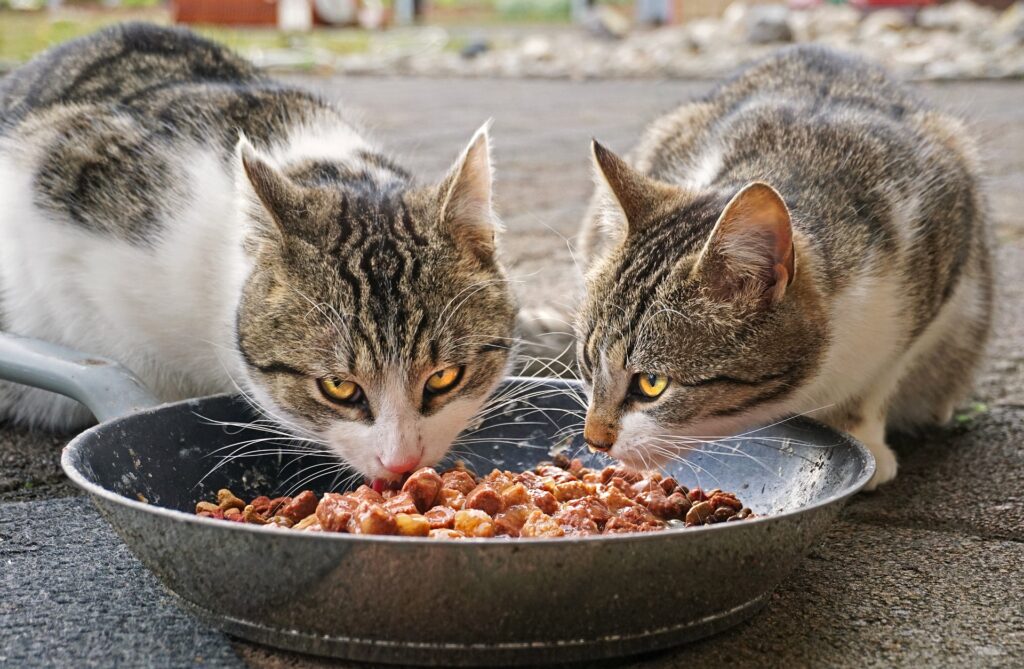
Can my cat have a vegan diet?
The compromise approach is even more important for cats. These are amongst the planet’s true carnivores, obtaining all their dietary requirements from other animals.
The main challenge with minimising the meat in a cat’s diet is that, unlike many mammals (including dogs), cats cannot produce certain proteins. They have to absorb these from the meat and fish in their diet. Amino acids are another issue – cats deficient in the animal-derived amino acid taurine, for example, usually succumb to a specific type of heart problem.
Even a fortified vegan cat food cannot be confidently recommended. Turn the situation on its head, and try to imagine weaning a rabbit onto a meat-only diet, and you get some idea of the challenge – and the ethics – involved.
There are some lab-grown ‘meat’ products in development, with vegan and vegetarian cat owners in mind. However, whether these will arrive – and remain – on the market any time soon is hard to guess.
For many vegan pet owners, there is a huge ethical issue involved in feeding the animals they share a space with. Ethics, however, include the animal’s needs too, and it’s an almost impossible issue to resolve when it comes to cats. If you are able to reduce but not eliminate the meat in your cat’s diet, that’s the safer option.
Top 10 pets for vegan households
There are, of course, plenty of other pets that don’t eat meat, or that eat some meat but can still thrive on a meat-free diet. Here are our ten favourites.
 1. Rabbits. No problems here – rabbits are happy vegans, with diets based on hay and vegetables. You could argue that the soft pellets they eject and then eat are animal products of a sort, but they are simply semi-digested vegetation.
1. Rabbits. No problems here – rabbits are happy vegans, with diets based on hay and vegetables. You could argue that the soft pellets they eject and then eat are animal products of a sort, but they are simply semi-digested vegetation.
2. Guinea pigs. Like rabbits, these wonderful little characters thrive on a 100% vegan diet.
3. Hamsters. As most hamster owners feed their pets with shop-bought hamster food, they may not be able to say exactly what the ingredients of that food are. However, vegetarian and vegan hamster foods are readily available.
4. Gerbils. Like hamsters, gerbils are omnivores that can live happily on a vegan diet. They tend to have rather delicate stomachs, so feeding them with a high-quality pellet mix is essential. Too much fresh stuff can cause problems.
5. Mice. Although they will eat pretty much anything in the wild, mice can thrive on vegan diets; but it is still best to use a food mix prepared specifically for them. This ensures that they will not be deficient in any of the vitamins and minerals they need.

6. Rats. These are the most omnivorous of rodents, but as long as you feed them a vegan mix that has been fortified with all the nutrients they need, they will thrive. Indeed, rats who eat too much animal fat tend to become fat and die prematurely.
7. Chickens. If you watch a free-range hen, it soon becomes clear that she will eat anything – grass, beetles, worms, and everything in your veg patch if you’re not careful! Most chicken feed emulates this mix of plant and animal products. However, it is possible to buy vegan chicken feed, and circumstantial evidence suggests that hens can thrive on it. However, they are likely to produce fewer eggs, and you will not be able to stop them scratching for worms and bugs, no matter how vegan the layers pellets are!
8. Budgies and parrots. Vegans will have no obstacles to face with budgies and parrots, unless the birds are being bred. Egg-brooding female birds need a protein boost, normally delivered via an egg-based food or cooked meat. Vegan alternatives are available, though.
9. Finches. Many finch species enjoy bugs and mealworms as treats, but these are not an essential part of an adult finch’s diet. These birds thrive on a mixture of seeds and fresh vegetables.
10. One for reptile fans. When you think of pet snakes and lizards, you probably have an image of dead mice or doomed crickets. However, there are a few commonly kept pet reptiles that eat a 100% vegan diet, the most popular being the Green iguana. Getting the balance of vegetables just right is very important for the animal’s health, but meat is certainly something you won’t have to worry about.
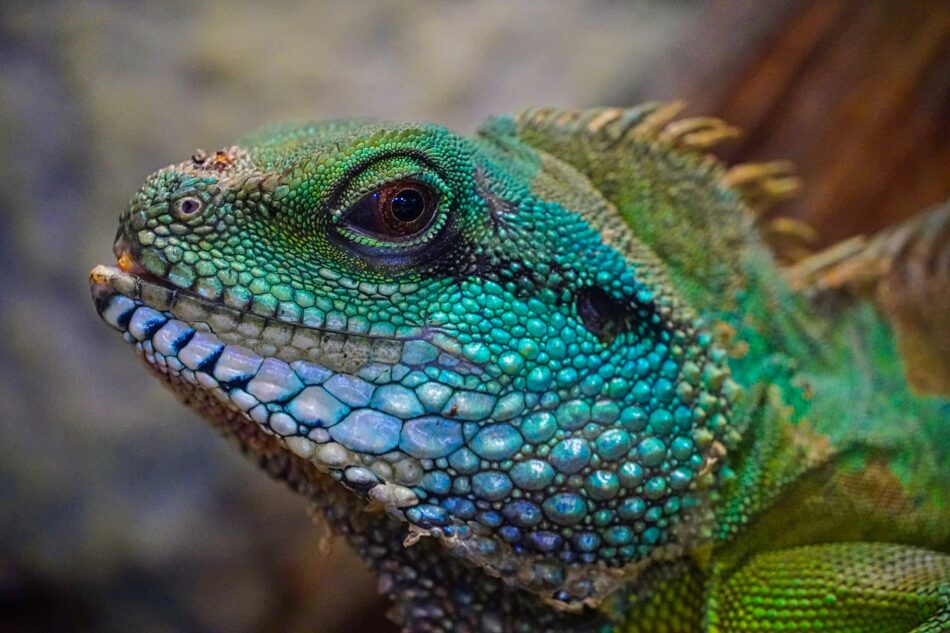
There is no shortage of choice when it comes to vegan pets. Keeping a vegan cat or dog is a much trickier proposition, though. And with all these animals, a balanced diet that matches the pet’s nutritional requirements should be your primary goal.
This entry was posted in Budgies
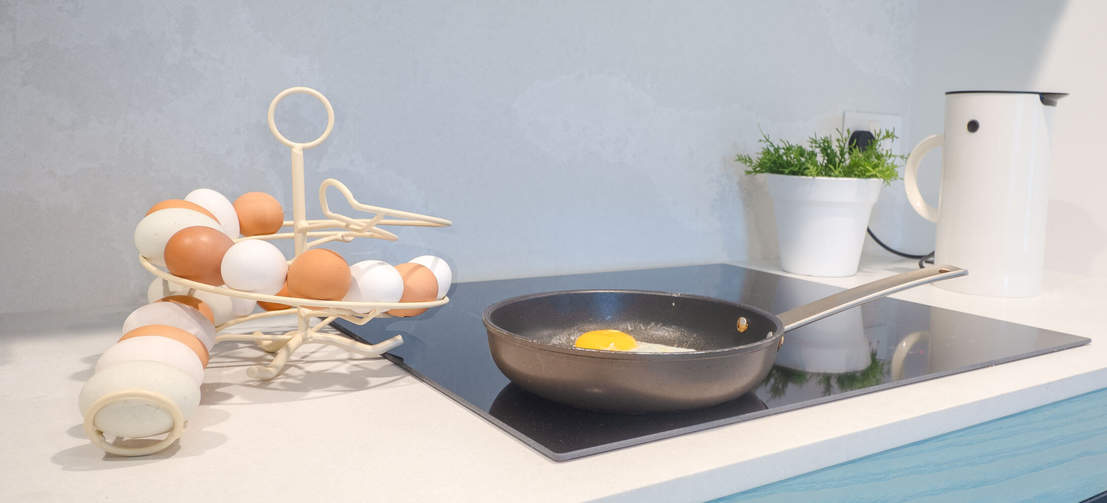
They might be small, but the humble egg is a nutritional powerhouse. Plus, their versatility means they can be used to make thousands of delicious recipes we all know and love. But do you know fact from fiction when it comes to the amazing health benefits of eggs?
Busting the biggest myths
You’re probably not unfamiliar with hearing that eating eggs can cause high cholesterol and can lead to cardiovascular problems. But, the reality of this is actually very different.
While the yolk of a medium egg contains a high level of approximately 186mg cholesterol, the majority of cholesterol is made by the liver as opposed to through diet. Approximately 25% of the cholesterol in the food we eat is absorbed by the intestine and 75% of the cholesterol in the blood is produced by the liver.*
Rather, high cholesterol can be caused by genetics and lifestyle choices like smoking and lack of exercise. This isn’t to say diet is not a contributing factor towards high cholesterol, though. Rather, a diet high in saturated fats such as fried foods, processed meat, and full-fat dairy products should be more of a cause for concern.
Eggs are also not responsible for clogged arteries or cardiovascular problems. It’s actually how you cook your eggs, or what you eat with them that could play more of a role in heart health. Frequently frying your eggs in lashings of butter or serving them alongside fried bacon every morning is more the problem. But, as with anything, moderation is key and you should always consult your doctor for tailored medical advice.
Why eggs are so great
A great source of micro and macronutrients
Whether it’s the yolk or the white, eggs are full of nutrients and vitamins that are useful for your body to function properly. Eggs contain carotenoids, antioxidants that help to fight against age-related diseases, especially eyesight.
Plus, eggs are rich in protein (2 eggs are equivalent to 100g of meat), vitamins A, D, E, K, B2 and N12, as well as phosphorus, magnesium, potassium and minerals, all of which keep your body in perfect working order.
The vitamin B present in eggs helps your brain to function properly, i.e. memory and concentration. Eggs can be consumed during pregnancy, as the nutrients present in eggs, including vitamin B9, help the growth and proper development of the fetus.
Eggs also contain Zinc for hormone regulation and with the proteins and vitamins they provide, eggs are a real ally for your hair. There are many recipes on the internet for caring for your hair with eggs but our favourite is using one egg, a few drops of sweet almond oil (no more than 4) and a spoonful of honey – your hair will thank you! Leave on for 10 minutes and rinse thoroughly.
Low calorie
Did you know that an egg contains only 90 calories? Two eggs at 90 calories each and you can make a low-calorie but very tasty omelet. The appetite-suppressant effect of eggs also makes it a food to include in your meals if you want to feel fuller for longer.
Sweet treat or protein-packed lunch?
Aside from the various health benefits, eggs can be used in many different ways, allowing us to vary our meals. Whether you like eggs fried, boiled, scrambled, in quiche, in cake or in pancakes, there’s something for everyone.
You can find a cake recipe here or why not try out a delicious banana bread? And for the perfect pancake recipe click here.
How to choose your eggs
Nothing beats the taste of freshly laid eggs from your hens. Plus, when your girls are as happy as can be in an Eglu Cube Chicken Coop, they taste even better! The love you put in towards caring for your flock really is returned with their labours of love in the form of tasty eggs. Having them on hand, without worrying about going shopping, is a real pleasure too.
You can even show off your hens’ hard work in the Omlet Egg Skelter. Not only will the beautiful design stand out in your kitchen, but it keeps your eggs neatly arranged in order of laying to ensure that you always use the oldest eggs first, meaning no waste.
But, if you’re yet to experience the joys of chicken-keeping and are purchasing your eggs from the supermarket, here’s what to look out for. Please note that the nutrient content may vary slightly depending on the origin of the eggs you consume. The omega 3 content may be lower if you buy your eggs from a cage farm instead of organic.
A grade eggs – Highest grade of eggs. Intact shells and are internally perfect. Eggs must be graded A for retail and catering.
B grade eggs – Unbroken shell, abnormal shape and staining.
Omlet and your eggs
Eggs have an array of benefits, and when chicken keeping is made so easy with Omlet, why miss out on the delight of having them fresh from your garden? From our Eglu Cube Chicken Coop for super speedy cleaning, Autodoor to put your flock to bed and the Walk In Chicken Run to give your chooks space to roam, shop Omlet’s remarkable range of chicken products, designed in-house by expert chicken keeping, animal loving engineers.
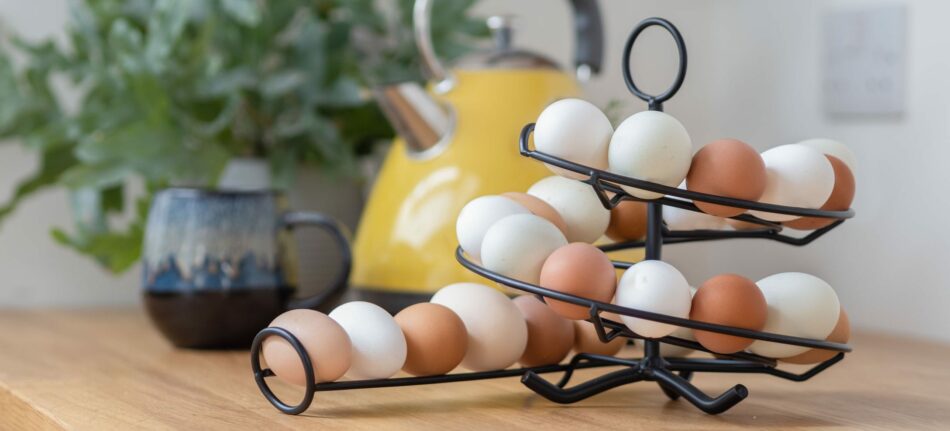
*Cholesterol Overview: LDL, HDL, Triglycerides, What Cholesterol Levels Mean (webmd.com)
This entry was posted in Chickens

This article is a part of our Pride of Omlet series, a collection of amazing stories which shine the spotlight on extraordinary pets and share their selflessness, bravery, talent and compassion with the world.
-Written by Anneliese Paul
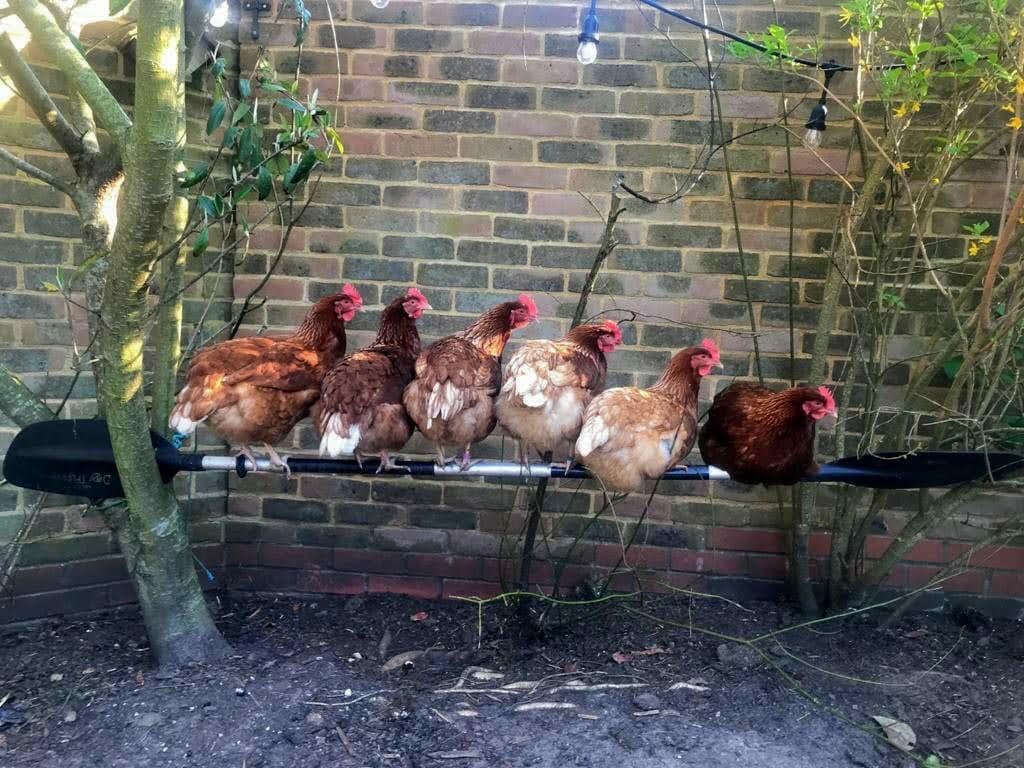
Henni Hen is a teaching assistant by trade. A cute and cuddly chicken who loves children. She follows in the footsteps of her bubbly humans, Hamish and Verity.
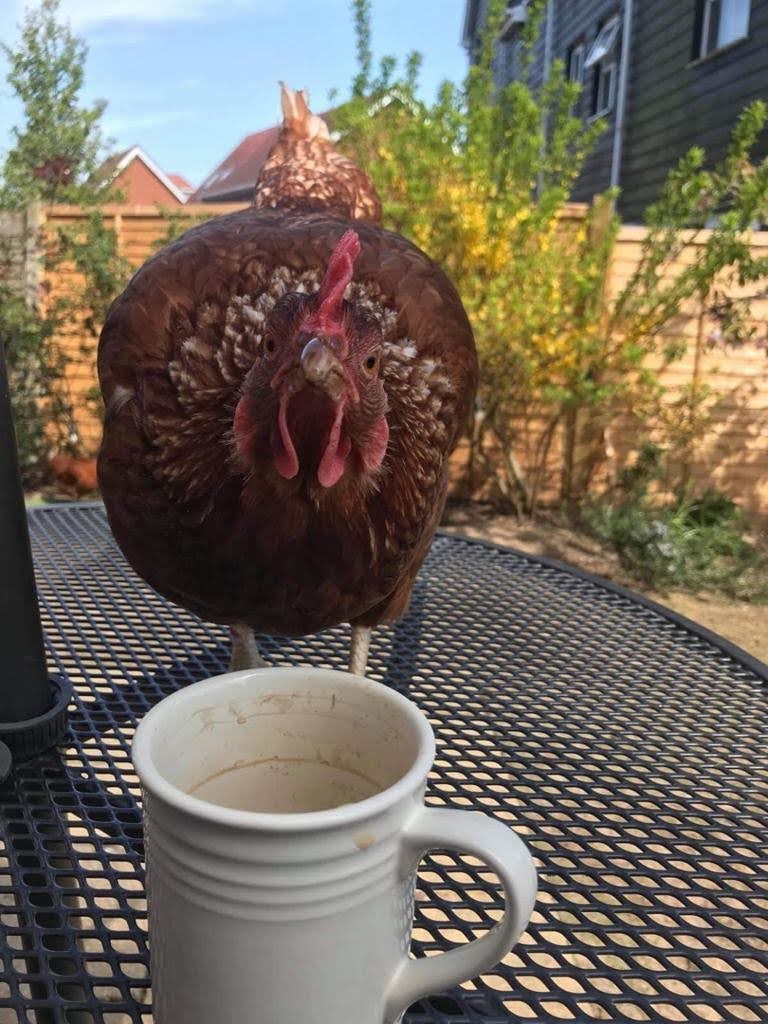
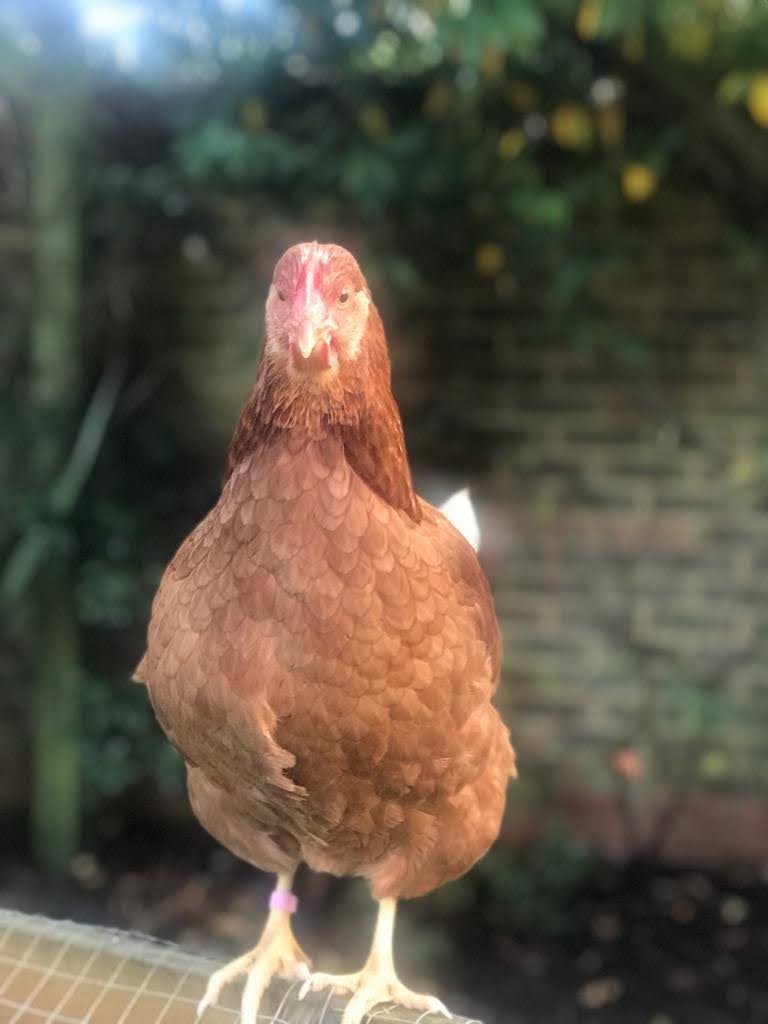
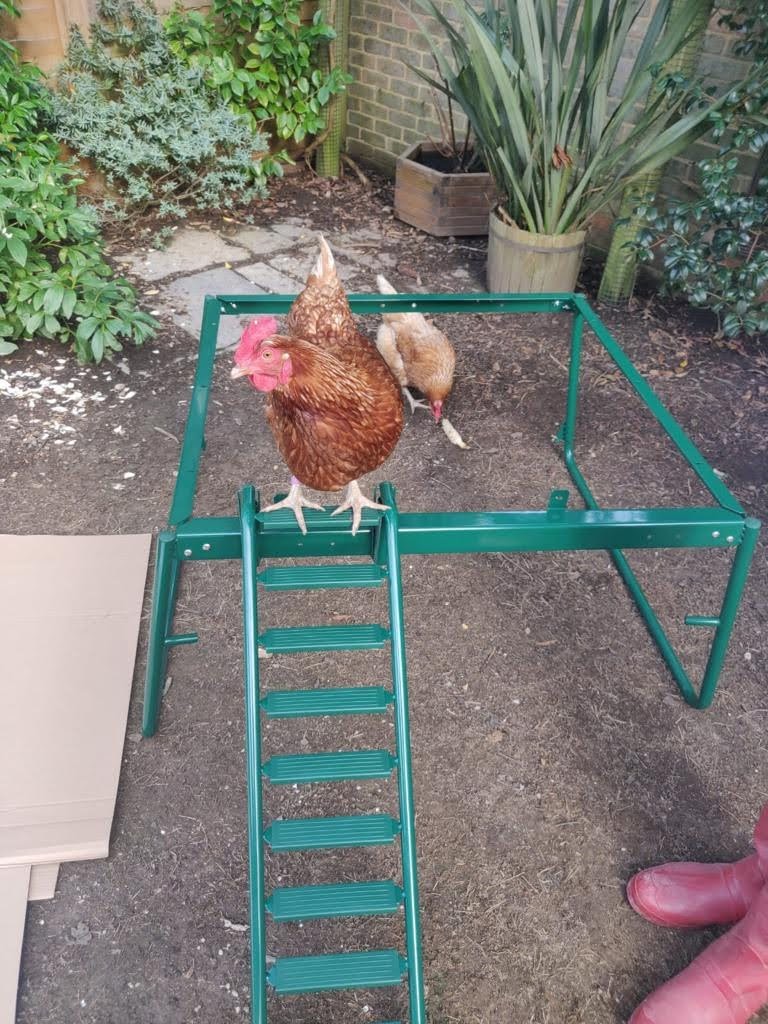
Verity hatches chicks in an incubator every year at the primary school in Kent, where she works as a reception teacher. It’s a highlight for the children in spring, with lots of learning opportunities and fluffy little chicks make Easter even more special.
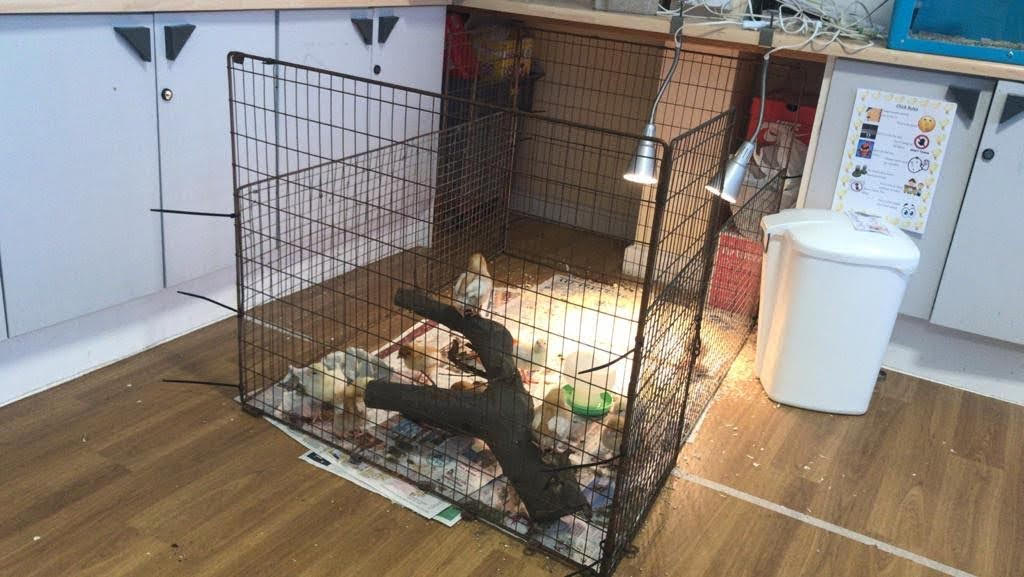
It was natural for Henni to become a teaching assistant at an early age. She was, after all, born in a school. Henni helped the children with topic work and became the subject of many good literacy and science lessons.
But Henni’s talent lies in her ability to help children read. Henni can’t read herself, but children who wouldn’t usually read to an adult began taking Henni to beanbag in a quiet corner where they could get cosy. Henni cuddles up and listens patiently to her young reader, giving the odd encouraging cluck.
When Henni and her sisters became too big for the classroom’s hutch, Verity and Hamish moved into a house with a garden. Instead of rehoming the chicks with local farmers (like they usually did), they decided to take Henni and her sisters home. They’d been talking about getting a dog, but both working full-time, the chickens seemed like a good option.
Most of the time, Henni is outside, like an ordinary chicken, scratching in the garden or getting up as high as she can. But Verity and Hamish potty trained her because she loves coming into the house for a cuddle, and of course, she needs to work.
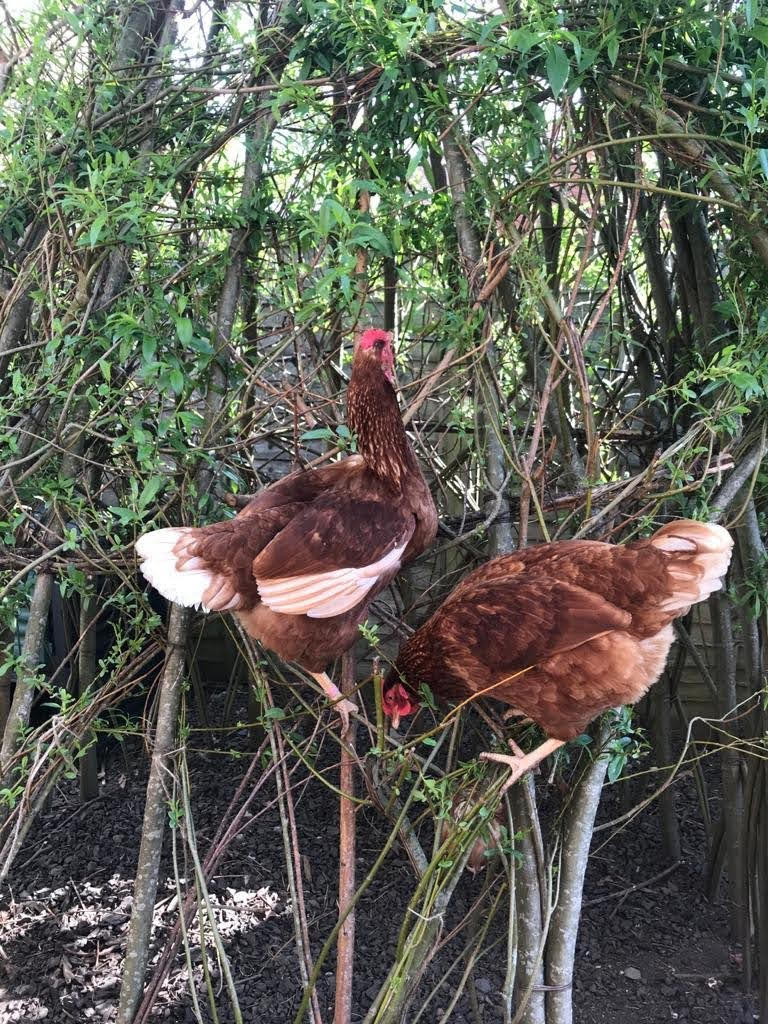
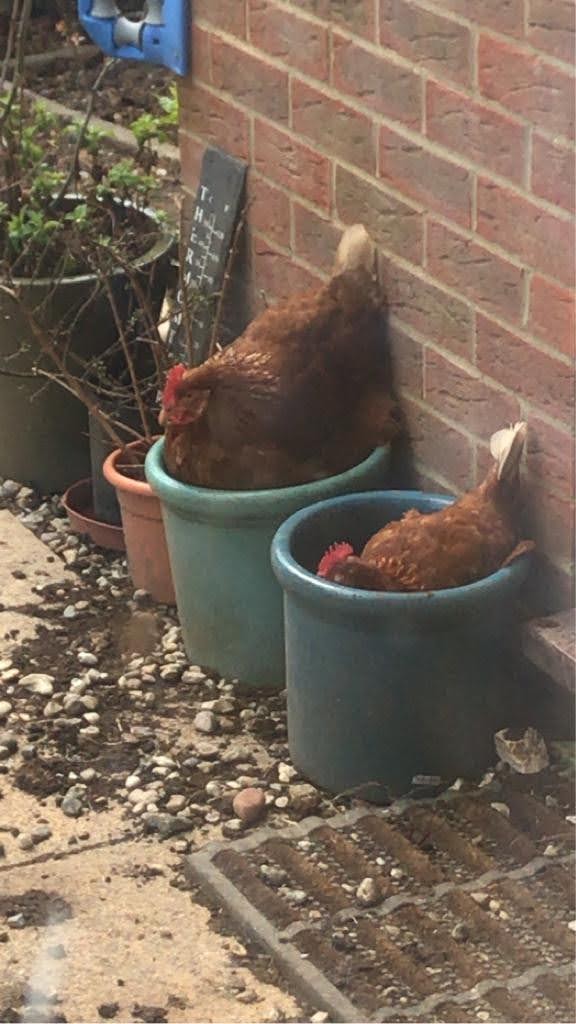
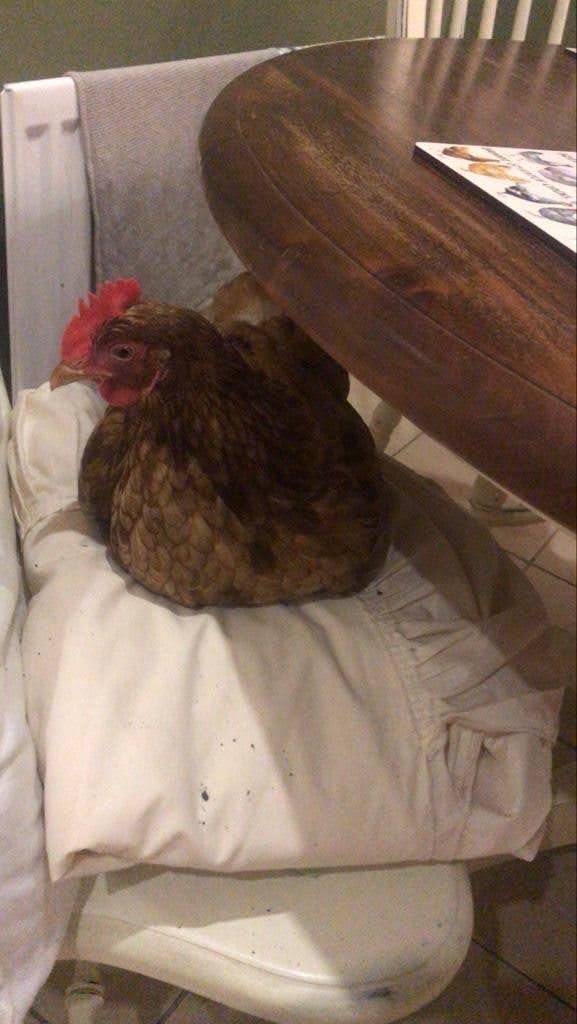
During the lockdown, the children missed holding Henni. So, Henni sprang into action and delivered both live and recorded lessons from the study that she shares with Verity. Verity read children stories, and Henni sat on her shoulder, making sure the children were listening. The deputy head called Verity regularly to make sure Henni’s doing ok.
Being a caring soul, Henni also gave to the community over lockdown. Together, Henni and her sisters lay six eggs a day, so Henni and Verity decided to do a doorstep delivery service for their neighbours. At 10 am, Henni would lay an egg and make a lot of noise about it, so all the neighbours knew when their eggs are ready. Then, Henni would hop onto Verity’s shoulder, and together they delivered eggs to all the houses on their close.
When she returned home, she’d often hop onto her favourite perch (the top of the garage), and the children from the neighbourhood would come over to Verity and Hamish’s to see “the one on the roof!”
Henni and her sisters Megg, Gertie, Margot, Ginger, Rona and Nora used to live in a wooden coop in the garden and come into the garage in winter when it was cold, but Verity and Hamish wanted the best for them. So last year, they got a new home, an Omlet Eglu Cube, and now they’re cosy outside all year round.
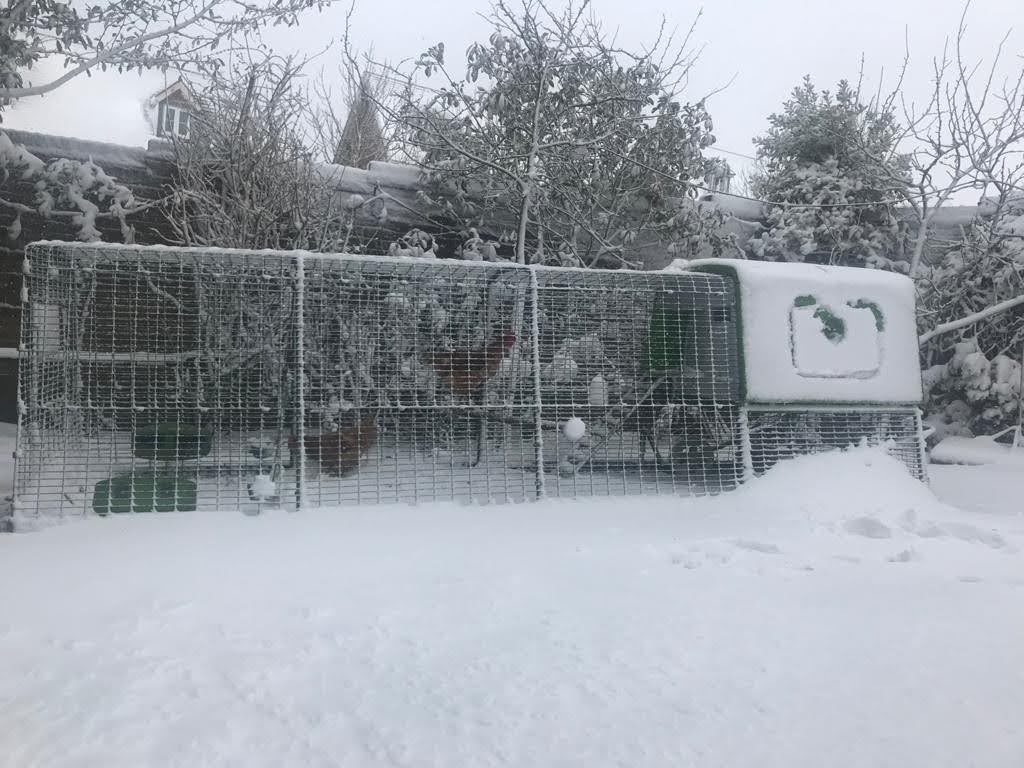
But Henni still likes to come inside for a cuddle and can often be found sitting on the sofa between Verity and Hamish for a family film night after a hard week at work.


She’s just an ordinary brown chicken, and she’s low in the pecking order, but she’s got high hopes for the world. She’s very special to the children she teaches and the community she lives in, and of course, to her humans Verity and Hamish. She’s worthy of a gold star for an outstanding effort.


This entry was posted in Chickens
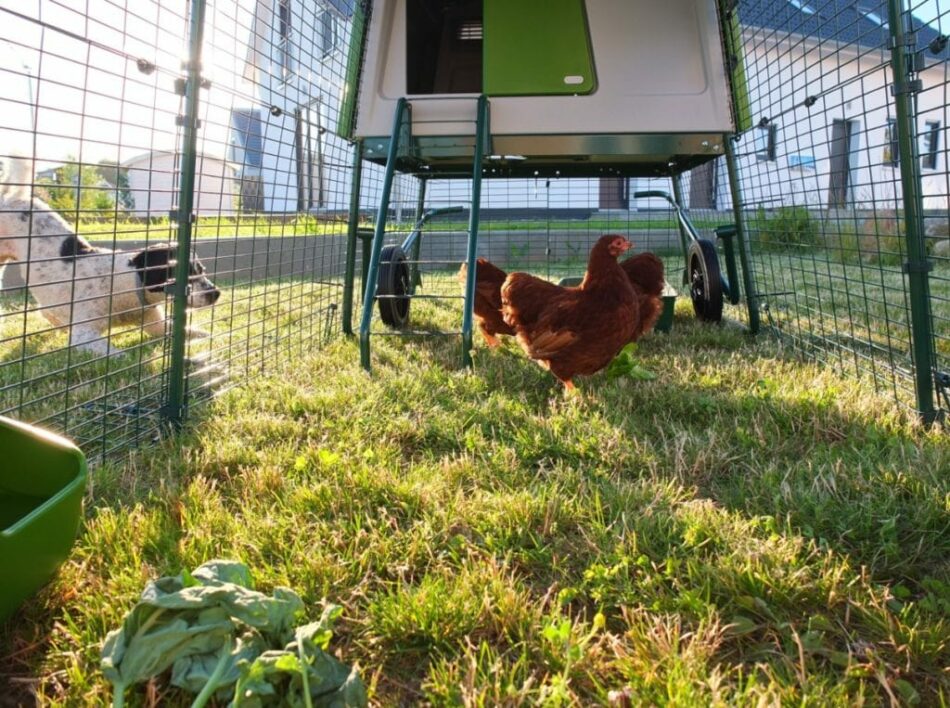
You can keep chickens with other pets when the proper preparations and precautions are in place. Some pets like cats and dogs may have an innate prey drive that chickens can trigger, so it’s important to take introductions slowly to ensure success. With these tips, you’ll be able to confidently introduce your current pets to your chickens, or introduce new pets to your existing flock with confidence.
Keeping chickens with dogs
Dogs are the most common pets in the world, with millions kept as pets across the country. So, if you’re among the many dog owners, adding chickens to your family is possible once you consider your dog’s temperament and trainability.
Assessing your dog
If you’re a dog owner, the first thing to consider is their temperament. Different dog breeds may also react differently to birds as part of their nature. For example, breeds like Labrador Retrievers or German Shorthair Pointers may become easily excited around birds due to their natural hunting and retrieving drives. Other breeds that may have increased prey drives include:
Regardless of their breed, if your dog becomes excited or overly curious around small animals, their behaviour will likely carry over to chickens. If your dog loses their mind over the birds at your backyard feeder, or drags you to investigate the park ducks on your evening walks, they’ll likely stress out your flock – and themselves.
Dogs without a prey drive or with little interest in birds will likely not pose a problem to your chickens, but all dogs react differently when new pets enter their territory. Usually, most dogs will adjust to the new backyard occupants just fine after an acclimation period. You will likely see your dog expressing interest in your chickens at first – hanging around and sniffing the coop. They may even express a desire to interact with your chickens through playful postures and behaviours. Understanding your dog’s body language around your chickens will help you determine what their relationship will be like.
Chickens are prey animals, and can be hurt easily. Dogs cannot play with chickens as they would with other dogs or even other pets. It’s important to teach your pup that chickens are fragile friends – not toys or something to hunt.
Teaching dogs to get along with chickens
Unless leashed walks make your dog overly excited, their first encounter with your chickens should be done with a dog collar and lead. Make sure their collar is tight enough that they don’t slip out, but not so tight that it’s uncomfortable. Walk your dog up to your chickens’ enclosure and let them sniff. Maintain a tight leash until you see your dog’s reaction, and allow the lead more slack slowly to reinforce good behaviour.
Let your dog watch you spend time with your chickens. This should be done with your chickens in the safety of a strong walk in chicken run. If your dog does more than sniff or hang around the run, take a step back and approach their interaction from a different angle.
It could take several weeks for your dog to fully accept your chickens. Some other ways to help your dogs adjust to your chickens include:
- Setting up chicken fencing around the outside of your flock’s run for your dog to observe them at a distance.
- If your dog has a run or playpen, place it next to your chickens’ run and slowly decrease the distance over several days until they are side-by-side.
- Reward your dog with their favourite treats each time they are calm around your chickens.
Make sure to never leave your dog unattended with your chickens – especially in the beginning. Even if they can’t get into the run with them, an excited dog’s barking can easily stress your flock out.
Keeping chickens with cats
Cats are more difficult to train than their canine counterparts, and are decidedly less predictable in their behaviour. But the good news is that most cats don’t see a large hen as potential prey the same way a dog might. Most cat owners will agree that their cats show little to no interest in their chickens. In fact, cats and chickens have a somewhat symbiotic relationship.
Birds and their feed attract rodents, which a cat would much prefer over your hens. So, when your cat is able to patrol your chickens’ surroundings, chances are good that any potential rodent problem will be nipped in the bud.
Some cats may show increased interest in your hens. This largely depends on your cat’s breed and temperament. Cats will pose a greater threat to chicks rather than grown hens, but by keeping your flock in a strong chicken coop and run, you’ll ensure they stay safe from your cat.
Keeping chickens with guinea pigs
It may be tempting to keep some cute cavies in with your chickens, but in reality it’s not wise. Chickens will likely pick on them, and with their short legs, guinea pigs can’t get away from them quickly. Their dietary requirements are also very different, and your chickens may eat your guinea pigs’ food in favor of their own, which means neither animal will be getting the nutrients they need. If you have cavies and want to house them near your chickens, it’s best for them to have their own guinea pig hutch and run.
Keeping chickens with rabbits
Rabbits on the other hand are fast enough to fend for themselves against chickens, and if raised together from a young age, can do well around chickens. Still, they require their own dietary needs and clean sleeping quarters. They don’t roost like chickens, so they’ll need their own burrowing space in the run or under the coop.
The easiest way to achieve this is by adding walk in chicken run partitions. This will allow you to create “rooms” for each species to ensure they all get what they need. You can open the partition doors to allow everyone to be together whenever you’d like, or create a third space as a common area.
Remember to try to give each species as much space as possible in their respective areas to make them feel safe and comfortable.
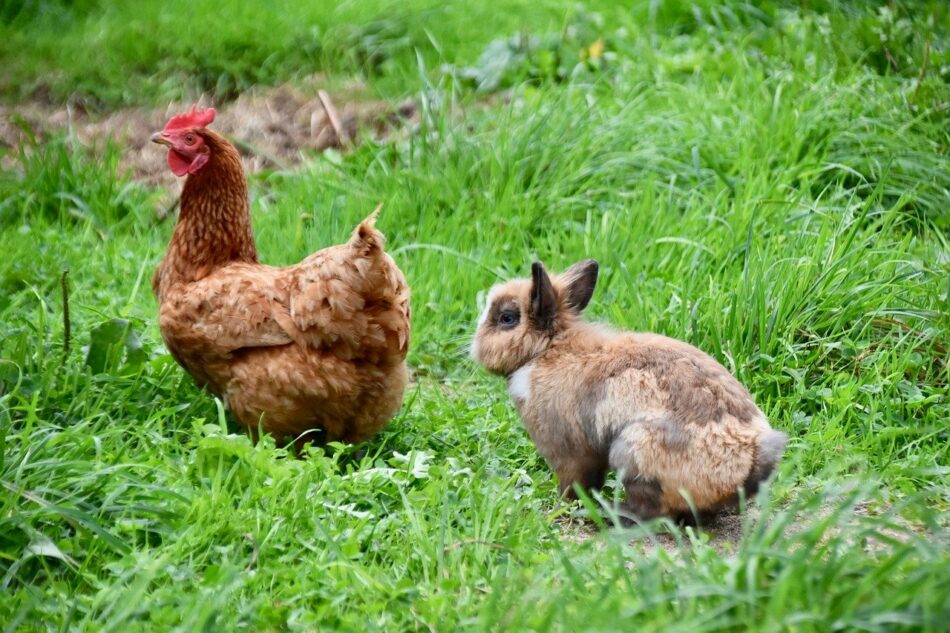
Chickens and other pets
Chickens can also mix happily with goats, and with female ducks (males will tends to bully them). Ironically, they do not mix with birds in an aviary. They will eat anything that falls to the aviary floor, but they will also happily peck the other birds whenever they can and may attract rats and mice, which will cause problems for the smaller birds.
If you live in a rural setting, you can keep chickens with other barnyard animals. Chickens mix happily with:
- Goats
- Sheep
- Cows
- Alpacas or llamas
- Pigs
- Female ducks, guinea fowl, peacocks, geese, or pheasants
Any other avian species kept with chickens should be docile and preferably female, as males can bully hens. Smaller birds like quail or pigeons will likely get pecked at by chickens, so it’s best to stick with larger birds as run-mates. Small pets like hamsters, gerbils, turtles, or frogs should never be kept with chickens – they will be pecked at and killed.
Omlet and your pets
Omlet has all of the pet products you need to keep your furry and feathered family members healthy and happy. Having multiple types of pets is exciting, and through our line of chicken coops, chicken runs, and walk in run partitions, you’ll be able to create a safe haven for all of your animals to enjoy. And, by knowing that Omlet products are protecting your flock, you can rest easy knowing that you’ve provided them with the best chicken housing solutions available.
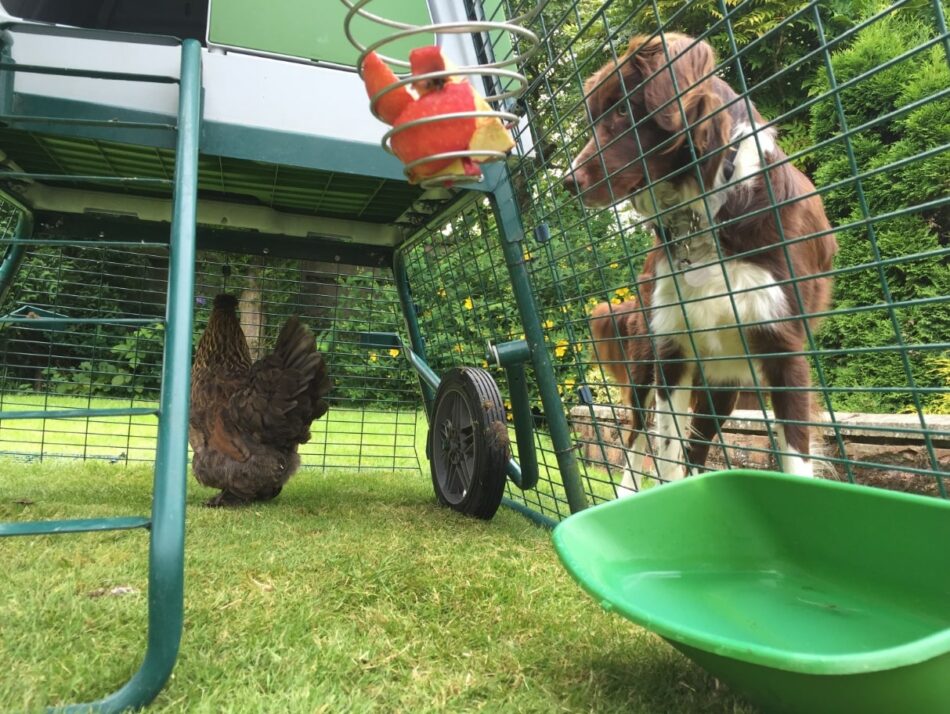

This entry was posted in Budgies

This article is a part of our Pride of Omlet series, a collection of amazing stories which shine the spotlight on extraordinary pets and share their selflessness, bravery, talent and compassion with the world.
-Written by Anneliese Paul
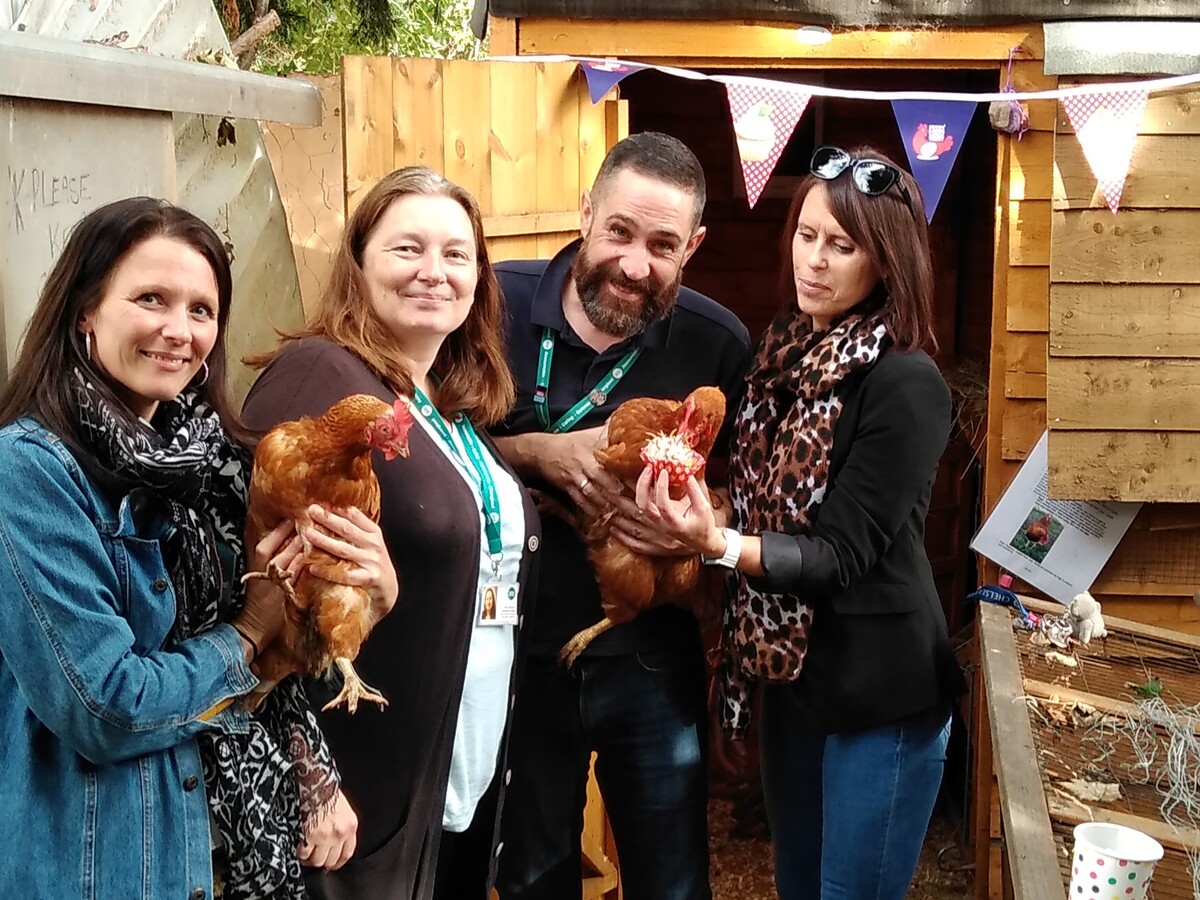
Once caged battery hens, Hennifer Marge and Sybil now work free-range with their human Jonathan, transforming lives for offenders at the Rosemead Project. Jonathan (support worker and chicken champion) believes the hens have the power to unscramble tricky social situations.
The Rosemead Project is a residential home in Southend on Sea that exists to get people in need of support on the right path, by learning independent living skills to transform their lives. Six years ago, Southend council granted the project funding to transform the garden. They installed a polytunnel, created raised beds and planted fruit trees.
Jonathan introduced chickens to the garden. The ex-battery hens arrived in a sorry state, malnourished with large patches of missing feathers and pale, floppy combs. But within a few weeks of scratching in the garden and the compost heaps, they were on the road to recovery.
When residents arrive, often from homelessness or prison, they are welcomed into their bedroom, and a bowl containing two eggs sits on the side table with a note that says ‘Welcome from Hennifer, Marge and Sybil’.
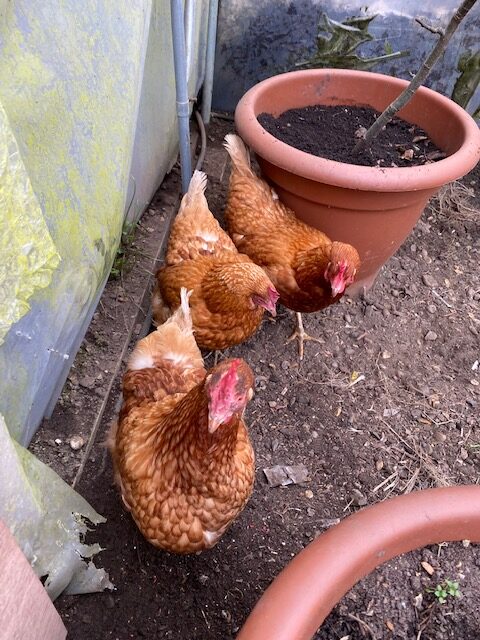
Jonathan uses eggs to teach residents how to cook simple meals, like omelettes. He’s put posters up in the communal kitchen with recipes showing different ways of cooking eggs. And the eggs have also become currency, cracking once tricky relationships with neighbours. After an anti-social behaviour incident, Jonathan visited Jean, one of the elderly neighbours who was nervous about the project. He took eggs and found that they were a good conversation starter.
It was all going well when a fox came. Doris, the mother hen of their original flock, ran towards the fox to protect the rest of them and was left dead. She’s buried in the garden and a lot of the residents were affected by the attack. So on his next egg delivery to Jean, Jonathan told her about the fox and said he would get some more chickens from the British Hen Welfare Trust. Jean came with him and got some hens too. It was a positive moment.
Hennifer, Marge and Sybil arrived, freed from their horrific caged lives. They’ve been with the project for two and a half years now and are the best-feathered support workers Jonathans ever met. Hennifer is confident, Sybil inquisitive, and Marge is really chilled. She can often be found under the lavender bush.
Residents typically stay with the project for two years before going on to independent living, but the path isn’t always smooth, and occasionally, they are sent back to prison. When this happened to one resident, he contacted the Rosemead Project (through his family) to ask if they could send photos of the chickens, they become an important support to many people living at Rosemead.
Another resident says he loves the sound of chickens clucking when he wakes up. It takes him back to a happy place. And another has taken charge and gets up at 7am every morning to let the hens out. Either sitting or working in the garden, the hens build resident’s confidence. “The hens don’t run away from them. That’s important,” says Jonathan.
Some residents like to buy treats for the chickens, which may seem like a small thing, but when it’s a choice between lager or mealworms and they’re choosing mealworms. It’s a good sign. There’s a trail of jobs that come from the hens that’s good for building life skills and the cleaning and care that goes into looking after a pet provides a sense of responsibility.
Jonathan says, “Sometimes, it’s hard to find positives in this job, but it’s a good thing to give something a quality of life, and the chickens are one of the little things that put a big smile on your face.”



This entry was posted in Chickens
Waiting until winter is over to start a flock? The warmer weather typically fans the flame of future flock-raisers, and understandably so — there are several reasons why spring is the perfect time to get chickens. The longer days and awakening earth make for ideal conditions for hens and chicks alike. Find out how to get started with chickens this spring, and what to expect through the rest of the year.

When should I buy my chickens?
The term “spring chicken” originated in the 1700s, when farmers realized that chickens hatched in the spring were being bought at a better price than those who had already been through their first winter. Most breeders now begin hatching eggs in December, which has pullets reaching laying age by spring.
Most laying breeds of chickens begin laying eggs between 16-22 weeks of age. If you purchase chickens that were hatched in December, you can expect to start seeing eggs around April. You’ll likely see just a few eggs to start with, but their production will increase as your pullets mature through their first year.
If you start out with chicks in the spring, they should begin laying eggs toward the end of summer. But you also run the risk of chicks being hatched too late in the spring to begin laying before their annual fall moult, which will push egg production into the winter or even the following spring.
How long will spring chickens produce eggs?
Chickens will continue to lay eggs throughout their lives, with their peak production age being around 30 weeks of age. After they’ve turned their first year, hens will begin to slowly produce less eggs over time, decreasing around 10% each year. Most hens will have stopped laying eggs by the time they’re 6 years old, but some breeds or individual hens may continue to lay infrequent eggs for the duration of their lives.
Feeding your chickens a quality diet of layer pellets or crumbles containing at least 16-18% protein will help them in their egg production efforts. Fresh fruits and vegetables, dried insects, and foraging will also help your hens meet their nutritional needs. Make sure your flock always has access to fresh water, and keep crushed oyster shells or another calcium supplement out free-choice in their chicken run to help fortify eggshells.
You can expect your hens to lay fewer eggs, or none at all, during their annual chicken moult. This occurs during late fall, when the daylight hours begin to shorten, triggering the process of chickens shedding their feathers to grow fresh plumage for the winter. Once your hens have donned their winter coats, egg production will resume as usual. The moulting process can take anywhere from 4-12 weeks, but on average you can expect to see fewer eggs for about 6 weeks.
Why is spring the best time for chickens?
Spring has everything that chickens love: mild weather, fresh vegetation, plenty of insects, and longer days to spend foraging. And as a chicken keeper, you get to enjoy these natural buoys to make your workload a little lighter and your days more joyful. There’s nothing like watching your flock scratch the ground while you relax on a calm spring afternoon.
Spring consideration: parasites
The earth isn’t the only thing waking up during the spring — parasites will also be making their comeback. For chickens, the main parasites to be wary of are red mites. Their presence drops off during the colder months, but as the weather warms back up, they’ll be ready for their yearly debut.
Watch your flock closely for signs of a red mite infestation. These include:
- Reluctance to roost, as mites lie in wait for chickens overnight
- Lethargy
- Sensitive skin or feathers, or persistent scratching
- Pale combs or wattles, as this can be a sign of anemia
- Irritation on the skin of the legs
Red mites hide in the crevices of wood, and are very hard to eradicate once they’ve infiltrated a coop. Treating your flock and their coop is tedious, and many treatments have to be administered repeatedly. Preventing red mites is the best line of defense against these opportunistic pests. Eglu plastic chicken coops prevent red mites from hiding, and can be pressure washed easily to eliminate any parasites that may be present.
Chicks in the spring
Spring is a very popular season for chicks. Most farm supply and feed stores stock chicks during the spring, and hatcheries are hard at work hatching higher volumes. This is largely due to the mild weather that spring brings, which makes transitioning chicks from a brooder to their outdoor run easier when the time comes. If you’re looking to raise chicks, starting them in the spring will allow you to move them to their permanent setup during the summer, which will ensure they’re warm enough. Some chicken keepers wait to raise chicks in the fall so that they’re ready to lay the following spring.
Whichever season you choose, you can expect to keep your chicks in a special setup called a brooder for the first 6-12 weeks of their lives. Chicks need a heat source until they are fully feathered, a milestone they usually reach by 6 weeks of age. Chicks younger than 12 weeks should not be expected to navigate a coop on their own, and should stay in their brooder until they are coordinated enough to head to their roost at night. Once they’ve reached 12 weeks of age, you can transition your chicks to their coop.
Prepare for the rest of the year
If you’ve decided to get chickens this spring, it’s a good idea to make a plan for the rest of your chicken-keeping year. Invest in chicken run covers to keep spring showers and summer storms from turning their run into a mud pit, and later to prevent snow and ice from freezing their feet. Outfit their area with some chicken toys and perches for year-round entertainment and enrichment, and install an automatic chicken coop door to simplify your schedule. These accessories are the perfect addition to further simplify spring chicken keeping, and will lend support in every season.
Omlet and your flock
Getting new chickens is exciting — no matter what time of the year it is. Outfit your flock with chicken keeping products that support their behaviors and your lifestyle. When you choose an Eglu Chicken Coop, Walk In Chicken Run and Chicken Run Covers, you’ll equip your flock with everything they need to stay safe and comfortable all year long.
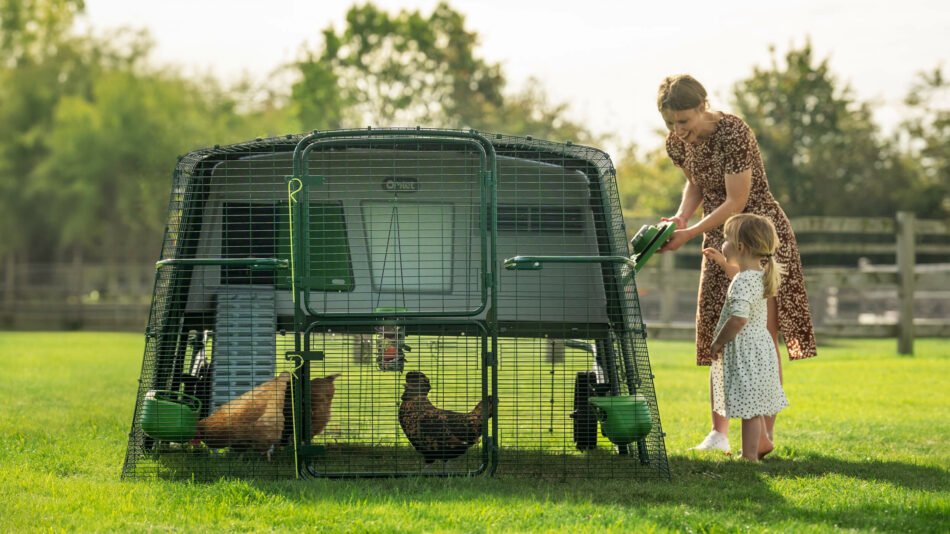

This entry was posted in Chickens

This article is a part of our Pride of Omlet series, a collection of amazing stories which shine the spotlight on extraordinary pets and share their selflessness, bravery, talent and compassion with the world.
-Written by Anneliese Paul



Martha’s humans Nicola and Ben bought chickens to bring joy to Julia, their mother who they cared for at home. The family could never have imagined that a chicken would become a caring companion to Julia in the advanced stages of dementia.
Julia used to have chickens as a child. She fondly told Nicola stories about dressing up the chickens and wheeling them around the garden, like babies in her toy pram. But it wasn’t until her 90th birthday that Julia owned chickens again. It was a dream come true.

Nicola and Ben always thought they didn’t have enough space in their bungalow garden, but whilst visiting relatives in Ireland, Ben saw an Omlet ad and brought it home to show Nicola. “That’s just what we need,” she said. Their Eglu arrived soon after, and then their two hybrid chickens moved in. Julia named them Martha and Mary.
Whilst Mary was always shy and kept her distance. From day one Martha ran to Julia, Nicola’s mum. “She was mums best friend from the beginning,” says Nicola.
Unfortunately, Mary died and then there was a near miss for Martha. Like most people, the family like to let their hens roam free in the garden for a bit, but one day a fox came into the garden and attacked Martha. Nicola and Ben heard her squawking and went to the window. The fox saw them and ran, leaving poor Martha very shaken and suffering from a broken wing. But Matha was brave, and luckily the wing has completely healed. Now Ben and Nicola have extended the run so the chickens only come out when they’re in the garden.
When it was sunny, Julia liked to sit outside in the sun watching Martha. Julia had to use a wheelchair, and Martha would jump (in a very ladylike way) onto the footrest to warm her feet. Last summer when Julia could no longer speak in sentences, she’d make gentle noises and Martha would answer back. She’d sit for hours by the wheelchair with Julia, having quiet conversations.
Nicola couldn’t deny Martha had a human quality. She didn’t just come for crumbs because she was there when there weren’t any. Martha cared.
“She went from a chicken, running around the garden then in those moments with mum, it was like she knew. It was beautiful.”
Nicola began to trust Martha to squawk loudly if something was wrong. When she went into the house to make a cup of tea, she’d leave Julia in the garden with Martha.
“It was weird,” says Nicola “ Martha would squawk, and I’d go out to find Mum had dropped something, or something had fallen off the table, or Mum was confused because she didn’t remember where I was.”

Martha was the thing that made Julia smile every time, and her eggs brought so much joy to Julia in the advanced stages of dementia. Boiled was her favourite, and Martha would let them all know when it was ready to be collected. When Martha lays an egg, she stands at the edge of the run and squawks and squawks as if to say, “Come and get my egg!”
Julia loved holding Martha’s warm eggs. Once, when Julia was having a lie-in, Nicola took her the freshly laid egg. She’d just woken up, and a big smile spread across her face, then she fell asleep again holding it. A couple of hours later, Nicola went to wake her up. Julia sat up. All of a sudden, the egg rolled out from behind her as if she’d laid it on the bed. Incredibly it was completely intact. “Are you laying eggs now?” asked Nicola. Julia understood, and that made them all laugh. It was the happiest occasion, just an egg rolling along the sheet. Julia kept the egg in her hand for the rest of the day. Moments like that are precious memories to Nicola and Ben.
Sadly, Julia died in September. When Julia was alive, it was Mum and Martha, Nicola says. She never thought she’d take to chickens. But having seen how Martha cared, chickens have become constant companions.
“ I think we’ll probably always have chickens because they get under your skin. Well, no, that’s a bad expression. They become part of you. They’re like a little family.”



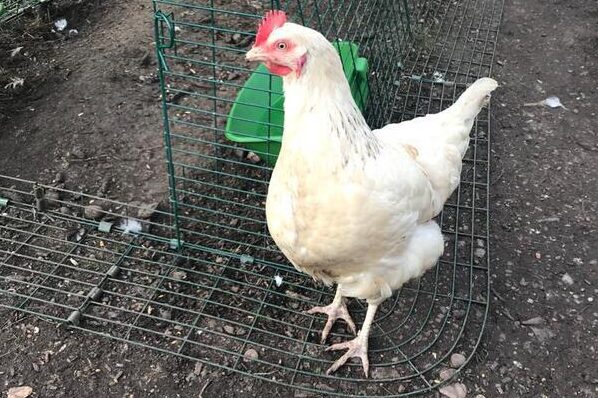
This entry was posted in Chickens
Having an automatic chicken coop door is an amazing technological advantage when keeping a flock. There are many ways that having an automatic coop door makes keeping chickens easier than ever, but there are 5 reasons you need the Smart Autodoor this summer that stand out among the rest. Discover newfound ease of chicken keeping and peace of mind this season when you upgrade your coop with a Smart Autodoor by Omlet.

What is a Smart Autodoor?
A Smart Autodoor is a revolutionary way of keeping chickens. Omlet’s automatic chicken coop door is a customizable, horizontally opening door for chicken coops, runs, or handmade hen houses. You can program the Smart Autodoor to open and close on a schedule of your choosing, or manually from your smartphone, tablet, or even Alexa or Google Home device. With these smart features in mind, here’s why having a Smart Autodoor will bring you and your flock big benefits this summer.
No more early mornings
When school is out, late mornings are in. Unfortunately, your flock doesn’t understand the concept of summer break. That’s where the Smart Autodoor comes in – simply program your door to open at a specified time in the morning, with the dawn, or from a push of the button on your phone. And, with Alexa and Google Home device integration, you can ask your virtual assistant to let your chickens out so that you and your family can sleep in.
Automatically adapt to the longer days
Summer brings longer days, which will affect the amount of time your flock spends outdoors. When you use the daylight sensing option of the Smart Autodoor, your coop door will automatically adjust for the growing daylight hours. Closing at dusk with the soft beckoning of a coop light, your flock will be able to enjoy pecking around their chicken run or garden during the cooler evenings all the way up until it’s time to roost. You can take your time grilling, swimming, or relaxing in the AC, knowing that your chickens are being safely tucked in automatically each evening.
Access coop information from anywhere
Wondering if your automatic chicken coop door is opened or closed? Need to turn on the coop light so to do a roost check with your coop camera? All of this and more can be accessed through Omlet’s Smart Autodoor app, available in the App Store and Google Play Store. All the app needs is a data connection to touch base with your smart panel – which means you can check in on your flock from anywhere in the world. Now that’s smart chicken keeping.
Improved coop security
The warmer weather has chicken predators retreating to their hideaways during the heat of the day. But as night falls, so do the temperatures – and predators will be out on the prowl, hungry and eager for an easy meal. To prevent predators from treating your chickens’ coop like a diner, the Smart Autodoor opens and closes reliably in all weather conditions, safely sealing your hens inside. The horizontal open and closing mechanism is incredibly difficult for predator paws to pry open, making your hen house a flock fortress.
Easily convert your current Autodoor with a Smart Panel
Already have an older model of the Autodoor? No problem – an Autodoor Smart Panel can be added to Omlet’s Autodoor. Simply disconnect the old control panel, put batteries or wire in the new panel, and reconnect the cables for an instant smart-upgrade. Once your new control panel is installed, simply download the app, and have full control of your chicken coop door and coop light right at your fingertips.
A summary of coop-safety tips
As summer hits its full-swing, it’s important to keep seasonal safety tips in mind. By preparing your flock for the warm season, you and your hens will be able to rest easy in your respective houses. To keep your chickens safe this summer, remember to:
Omlet and your summer flock
Enjoy summer with your flock with our line of ingenious chicken products. From chicken fencing to add foraging options, to fully enclosed chicken runs with optional covers to provide plenty of shade, you and your hens can make the most of summer together. Add the Smart Autodoor to your setup for reliable flock security when your nights or mornings run late, or for spontaneous summer weekend trips. With Omlet, you’ll look forward to summer chicken-keeping, and be able to relax knowing your flock is in the best setup possible.


This entry was posted in Chickens
Note: from 14/12/2020 all chickens in the UK should be kept indoors to prevent the spread of avian flu. For more information, please see these articles: https://blog.omlet.co.uk/2020/11/26/
https://blog.omlet.co.uk/2021/01/27/
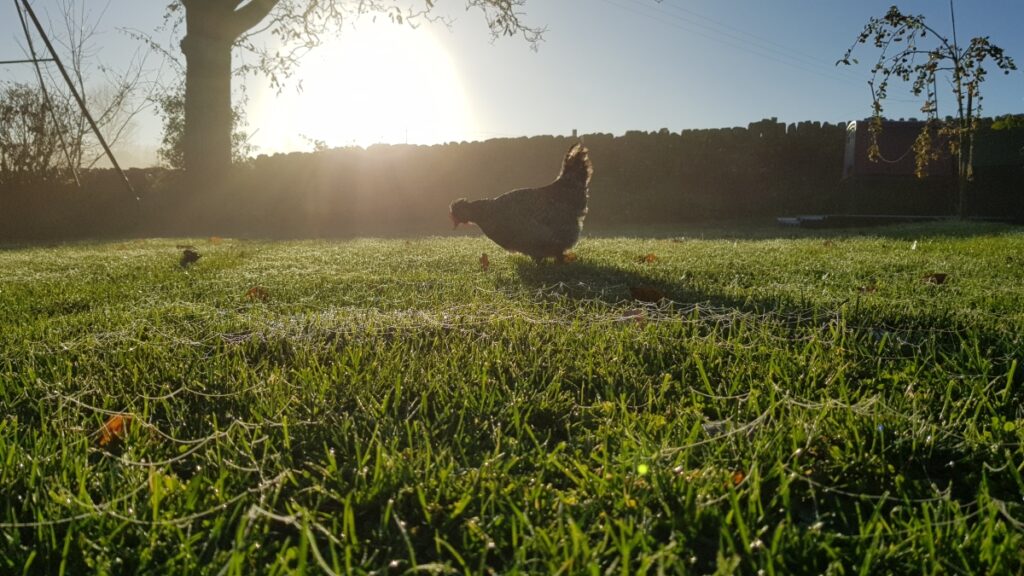 Having some feathered friends in your garden who regularly lay eggs for your enjoyment – that sounds good, doesn’t it? But there are a few things to consider before raising and keeping chickens in your backyard. Whether your garden is suitable for chicken keeping or the actual costs which are involved… In this respect, we’re going to be egg-ucating you today about some advice and guidance!
Having some feathered friends in your garden who regularly lay eggs for your enjoyment – that sounds good, doesn’t it? But there are a few things to consider before raising and keeping chickens in your backyard. Whether your garden is suitable for chicken keeping or the actual costs which are involved… In this respect, we’re going to be egg-ucating you today about some advice and guidance!
What does it cost to keep chickens?
The regular running costs include feed, bedding, sand, lime, water and electricity. Depending on the breed and age of your chick and the type and quality of the feed, you should expect about £12 for five chickens/month. If your chickens also find a lot of feed in the run, you can keep the costs quite low, while high-quality organic feed costs significantly more. You can also budget stuff such as cabbage, cauliflower leaves or spinach to supplement their pellets, as hens do need a bit of greenery in their daily diet. Bedding cost approximately £15.
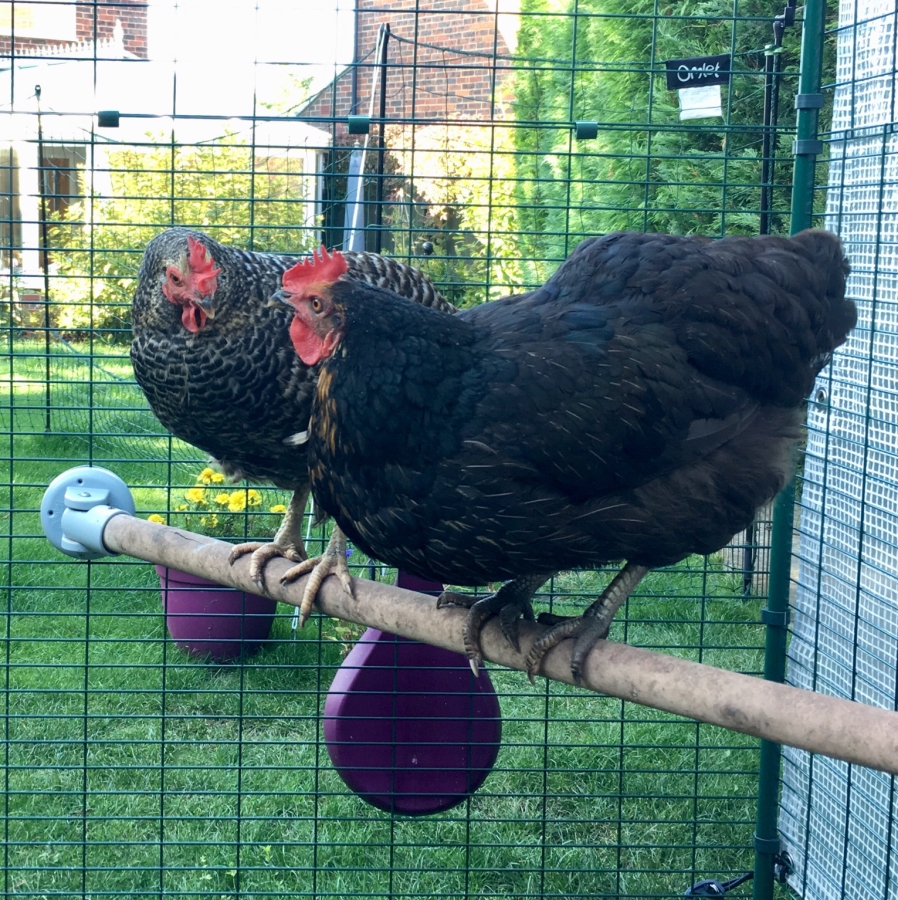 In addition, there are costs for the vet, which can hardly be calculated. The vaccination costs are still quite manageable, the vaccine itself is a maximum of £15. Depending on what you want to vaccinate your chickens against and whether you also deworm regularly, the costs naturally increase. With other health supplements we can calculate £60/year.
In addition, there are costs for the vet, which can hardly be calculated. The vaccination costs are still quite manageable, the vaccine itself is a maximum of £15. Depending on what you want to vaccinate your chickens against and whether you also deworm regularly, the costs naturally increase. With other health supplements we can calculate £60/year.
To answer simply, the maximum cost to raise chickens in your backyard will be £50/month, for a flock of 5 hens. Basically it can be said, chicks are cheaper than other pets like dogs or cats and we even receive some delicious eggs from them.
Please be aware that all prices listed here are very general estimates and can vary greatly from state to state and between cities and towns.
Besides these running costs you should definitely purchase a convenient and practical chicken coop to keep your pullets safe. You can buy a pre-made coop or you can build your own.
to keep your pullets safe. You can buy a pre-made coop or you can build your own.
The Omlet Chicken Perch
Something that definitely needs to be on the list is a food and water dispenser, a perch and at best some peck toys and a treat holder for the cleanest and healthiest way to feed treats to your flock.
And don’t forget the costs of chickens themselves. These costs depend on the breed and their age. A good starter flock usually consists of 4 to 5 birds aged 16 to 24 weeks. If you’re up for a special breed or pedigree chickens, the prices might be more expensive. The chicken costs may vary between £3 and £12 per chick.
Please visit our guide ‘How Much Do Chickens Cost?’ for specific information:
https://www.omlet.co.uk/guide/chickens/should_i_keep_chickens/how_much_do_chickens_cost/ The Omlet Peck Toy
What is the workload and do I have enough time to keep chickens?
The daily workload depends on the size and age of your flock, and how well you pre-planned. It’s a matter of course that newly hatched or baby chicks might need much more of your time than adults. For finding out which chicken age is more suitable for you, please refer to our previous blog: ‘Chicken keeping for beginners: adult chickens or baby chicks?’ (insert the link).
Generally you can say, the more chickens you have, the more work there is to do – but also the more eggs that will make you and your family happy each morning! However, keeping chickens in a small flock with around 6 animals is much easier than keeping a dog. You will need to feed your flock and change their water daily, and give them all a quick daily health check. Moreover, you should let your chickens out of their coop at least once a day, either on a free-range basis or in an enclosure, which will ensure to keep them safe from predators.
Another important factor you should keep in mind is your working hours. If your work starts in the early morning or in the late evening, it’s difficult to manage letting your chickens out of the coop and back inside again. However, this doesn’t necessarily imply that you are not able to keep chickens at all. For this, it’s a good alternative to purchase an Automatic Chicken Coop Door, which can completely open and close automatically, even when you’re not there!.
With an effort of approximately 10-15 minutes workload per day, you will be able to take the essential actions to keep happy and healthy chickens (plus any extra play and cuddle time you choose!).
Is my environment suitable for keeping chickens?
 In order to keep healthy and happy chickens it is necessary to have a safe outdoor area with plenty of space, where they can exercise, enjoy the sunshine and fresh air. Your chicks should be able to express normal behaviours, such as scratching, foraging and dust bathing.
In order to keep healthy and happy chickens it is necessary to have a safe outdoor area with plenty of space, where they can exercise, enjoy the sunshine and fresh air. Your chicks should be able to express normal behaviours, such as scratching, foraging and dust bathing.
The selection of the chicken breed as well as how many chickens you want to keep are the key indicators for the necessary space requirement. You should definitely give your chickens plenty of green space to enjoy their freedom. However, it is important to have a coop and an outdoor enclosure to keep your chickens safe from predators when you’re not around.
Who takes care of my flock if I’m away?
Whether you’re planning a short time away from your flock or a longer trip – with appropriate planning there are ways to manage it, so you can leave your chickens without a guilty conscience.
The most convenient and easy way would be to ask a friend, family member or your neighbour to have an eye on your flock while you’re away. If you’re unlucky and can’t find someone around you, don’t worry. Ever heard of a chicken sitter? Yes, they do exist. Investigate in your local area whether a chicken sitting or boarding service is available. As for dogs or cats the same goes with chickens: the ideal chicken sitter is one who knows poultry well.
An alternative is to invest in an automatic feeder. It allows your flock to get access to food all day at will and keeps rats or other unwelcome guests away. Another great item would be an Automatic Chicken Coop Door, where you can set the time via the control panel, when the door will open and close the coop at a certain time or based on the rising and setting sun, so they can still enjoy their freedom when you’re not home.
Can I mix different breeds of chicken?
Yes, in most cases you can mix breeds of hens, while it is better to let roosters be on their own.
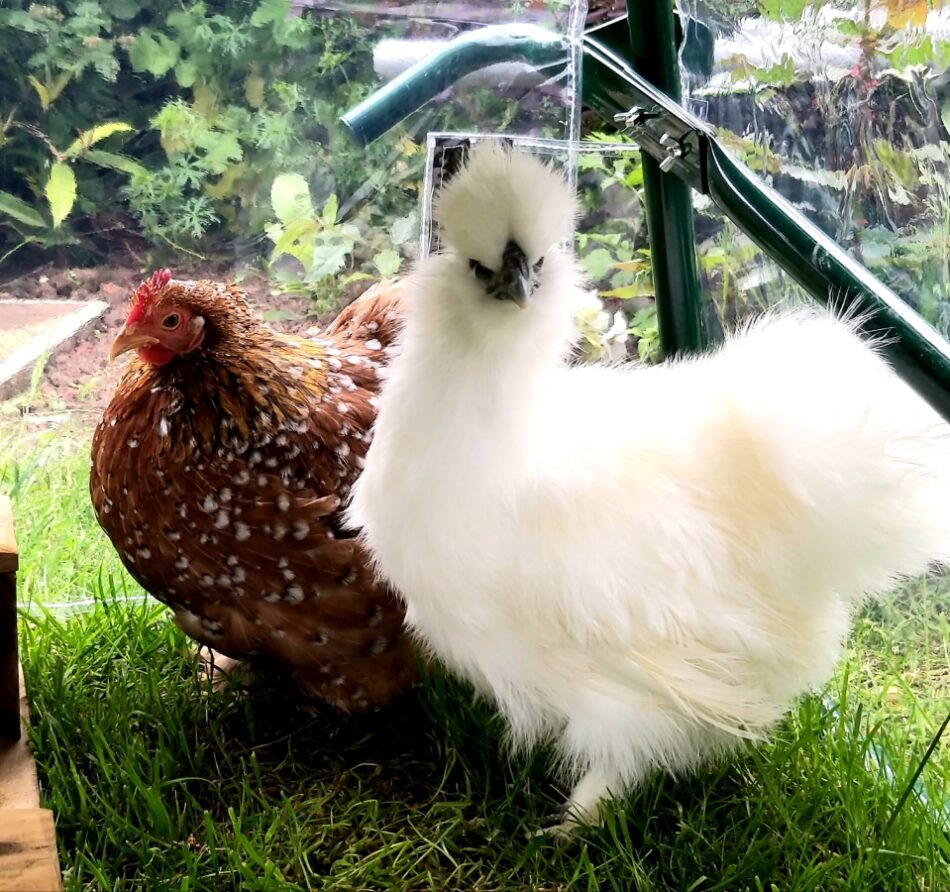
If it comes to age, older chickens can sometimes bully chicks simply because of a
pecking order issue. Suddenly, there are new chickens in the coop, and the older chickens want to establish themselves at the top of that pecking order but this is a natural conscious behaviour and has nothing to do with the breed itself.
Real problems may occur by “mixing” breeds when you have e.g. five chickens that are very similar looking (like Rhode Island Reds and New Hampshire Reds) but only one chicken with a very different look. Chickens who look entirely different from the rest of their flock can get picked on.
Some crested chicken breeds e.g. the Polish do not see very well, because their crest feathers are in the way, which can be a disadvantage and might lead to getting pecked.
The most important thing to remember when integrating new birds into an existing flock is to isolate or quarantine all new birds for at least 30 days. This gives you time to observe all new birds for symptoms of disease and/or signs of external parasites and to treat them if necessary. Then once the 30 day isolation period is completed, introduce new chickens or chicks to the flock and always monitor the interactions between old and new chooks up close and personal until you’re sure that all is well. When they feel comfortable and get along, a simple daily check-up will do fine. For acquaintance, allow your chickens to free range and mingle together. More information regarding introducing new chicks to your flock you can find here: https://blog.omlet.co.uk/2020/04/26/how-to-introduce-new-chickens-to-your-flock/
Always remember, your feathered friends are living animals and you’re making a commitment to care for them properly. Make sure you have sufficient time and space for them to live happily and healthily.
If you keep your chickens in the above stated conditions, they will be grateful and thank you with some snuggles and delicious eggs. The better the pre-planning, the more relaxed you will be and the more satisfied your chickens will be.
This entry was posted in Chickens
You can buy chickens when they are still chicks, or you can choose ‘point of lay’ hens (also known as started pullets). These are ready-to-go birds that are about to begin laying eggs, and they offer the easiest entry into the wonderful world of chicken keeping.
If you choose to buy chicks or hatch fertilized eggs laid by your own hens, you will have to care for the young birds for the five months before they start laying. They are extremely cute but delicate little things, and easy prey for cats, rats and other creatures that wouldn’t attempt to attack a full sized hen. You will also need to keep them warm, which means investing in special equipment.
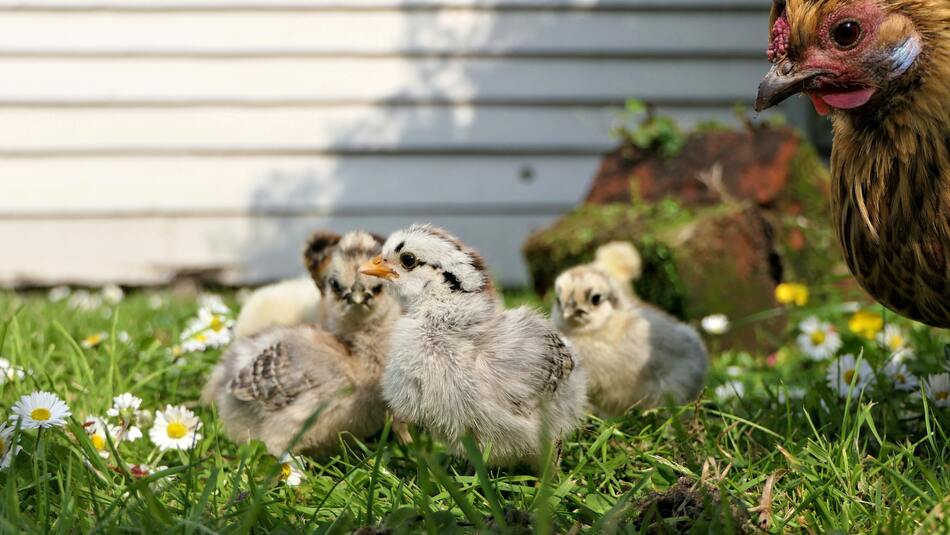
So, if you are simply keeping chickens for fresh eggs, you should start with adult birds rather than chicks.
Why buying point-of-lay hens?
This is the entry point for most people who are new to keeping chickens. By checking availability in your local area, you will be able to source birds close to home. The advantages of choosing these older birds pretty much outweigh all other options, and the only reason you would opt for buying or hatching chicks is if you want to look after small birds. For many people, this is a very rewarding activity, but for someone who just wants to look after laying hens, started pullets are the way forward.
Why keeping ex-barn hens?
Another great way to stock your coop is with rescued chickens. Intensively reared hens kept in barns are judged to be past their prime after a year and a half, even though they still have a good 18 months of laying ahead of them. For the majority, this is the end of the road. However, charities such as the British Hen Welfare Trust (BHWT) rehome these hens.
All ex-barn hens have great charm and personality. They tend to look rather bedraggled and sad when first rescued from their imprisonment, but with a bit of TLC they will blossom as impressively as the Ugly Duckling!
The advantage of sourcing these chickens from the BHWT is that all the hens will have been screened for good health, and you will never knowingly be given an unhealthy bird. Some ex-barn hens may arrive with a limp, and most of them will look half-plucked, but they will soon recover their composure, and – as most of these chickens are ‘disposed of’ at less than 18 months old – they will still give you a couple of years of good laying.
What do I need to know about buying chicks?
You need to be sure that you buy baby hens and not cockerels. There are no external clues as to what sex a chick is, and any stock sold sight unseen (or ‘straight run’) will be a 50/50 mix of male and female birds. You need the chickens to be sexed to ensure you get hens. If this is not possible, wait for started pullets to become available.
Chicks need special accommodation for the first few weeks, and they can’t simply be kept in a standard coop and run. You can buy brooder boxes to keep them, or you can improvise one using a cardboard box or plastic bin with holes in the side. The important thing is to keep the birds warm and protect them from drafts while ensuring good ventilation.
After installing your chicks, pay close attention to how they behave. If they’re crowded together directly under or adjacent to the heat source, they’re cold. Lower the heat source or add another. If, on the other hand, they shy away from it, they’re too hot. In this case, the heater or bulb will need to be moved further away.
What do I need to know about chicken brooders?
You will need to provide 6 square inches (39 square cm) per chick in the brooder. Once they are five weeks old they can be moved to a coop and run, where they will need at least two square feet (0.19 square metres) per bird to ensure they have enough room when they get bigger – which they will do, very quickly. The chicks need to be kept in a temperature of 35C (95F) in their first week. The heat should be reduced slightly each week until you’ve reached room temperature. A heater designed for coops and aviaries is the best buy. A red heat bulb is another option (not a white one – these produce glare that keeps chicks awake at night and tends to make them irritable and prone to pecking). Standard light bulbs will not do the job.
Very young chicks will need to have their water changed at least twice a day, as they have the uncanny ability of turning all liquids to messy soups within a few hours! They also need their bedding changed at least once a week. A chicken wire covering for the top of the brooder is advisable, too. Chicks can easily ‘fly the nest’ if the sides of the brooder are less than 45cm high.
Chicks can spend a little time outdoors when they’ve reached two weeks. A large wire cage or some other type of portable enclosure can be placed outside for a few hours a day – but only if it’s at least 18C (65F) and not too windy, and dry. The birds will need food, water and shade, and shouldn’t be left alone for very long. Predators are everywhere when you’re a small chick!
Once they’ve reached four to five weeks, the chicks can be moved permanently into the outdoor chicken run.
Do I want to breed my own chickens?
Another way of keeping chickens is to keep the flock refreshed by hatching eggs from their own chickens. The easiest way of raising chickens is to let nature take its course. All you have to do is provide a nest box for a broody hen. She will provide the right conditions for hatching eggs (although she will not be able to cope with more than a dozen at a time, or fewer with smaller breeds), warming and turning them as necessary. An incubator is the alternative hatching method.
A cockerel will do everything in his power to tread the hens in his flock and fertilize the eggs. If a chicken is broody, she will then sit on the eggs for 21 days (the incubation period), and with a bit of luck these eggs they will then hatch.
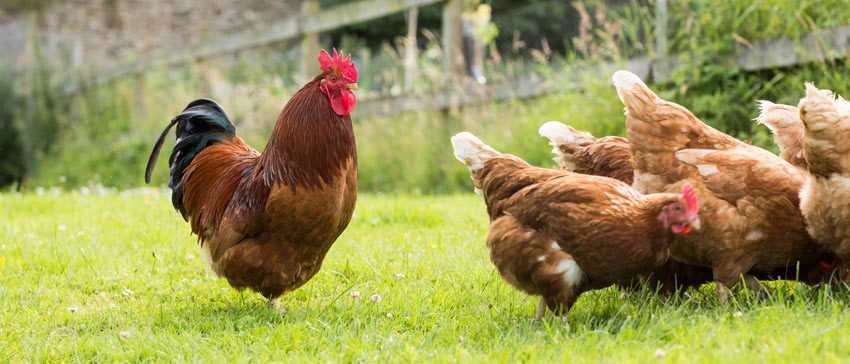
Rearing chicks is a great hobby, but you need to be dedicated to the job. If all you want is fresh eggs and a flock of healthy, happy adult chickens, wait for point-of-lay birds to become available, or contact the BHWT for some of those rescue hens in need of a good home.
This entry was posted in Chickens
Whether you’re a beginner or experienced chicken keeper, we have put together a list of 10 essential products you should consider having to hand if you decide to keep chickens in your garden.
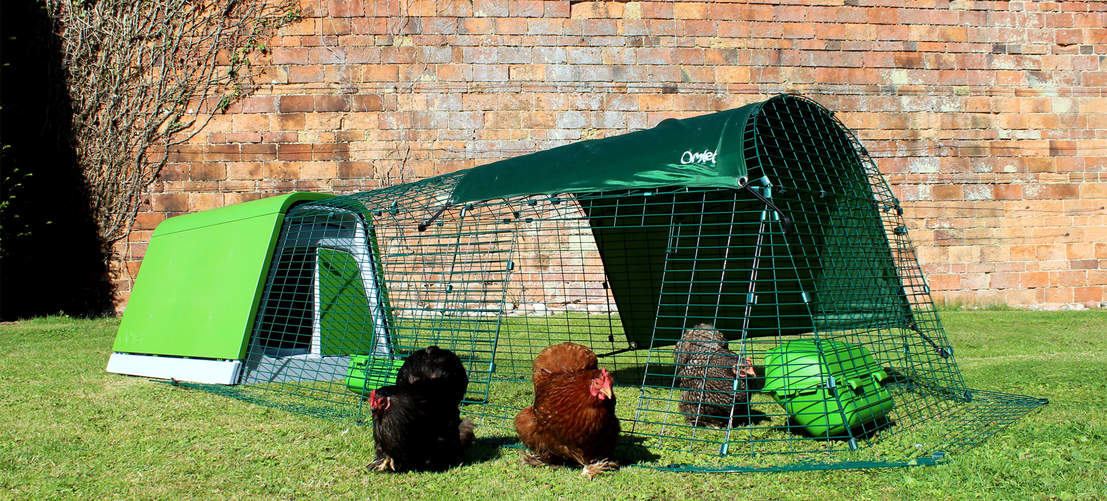
Certain accessories and equipment are essential to keep your chickens safe and healthy.
The products to have on your shelves
Diatomaceous earth: a must!
Diatomaceous earth is a natural and completely organic product which can be sprinkled in the chicken house to prevent the proliferation of red mites. You can also treat your chickens by mixing it with their feed, or dusting them with the powder and incorporating it into their dust bath.
A coop disinfectant
The shelter, equipment and accessories of your chickens must be cleaned regularly to keep their home hygienic and healthy. Use a pet safe disinfectant, like Battles.
Cider vinegar has many benefits
A little cider vinegar in your chickens’ water will help to improve their respiratory system, boost their immune system and maintain a healthy digestive system. Warning: do not use cider vinegar in metal drinkers. This breaks down the metal and can create a toxic chemical reaction for your chickens. Want to clean your eggs but water is not enough? Use the cider vinegar by dipping your eggs in it for 10 seconds. They will be impeccable! You can even add cider vinegar to the water before washing your chickens. Finally, clean your drinkers and equipment with apple cider vinegar to remove traces of limestone. Vinegar is a whitener and a very good disinfectant.
Grit
Having grit on your shelf is essential. Your chickens don’t have teeth, so grit helps your chickens digest the grains and other foods they eat more easily. The ingestion of grit is a physiological need essential for the good health of your flock.
Food supplements
A chicken eats an average of 120g of food per day. Food supplements can be great for maintaining your chickens’ health and egg production, and providing them with their daily dose of vitamins. For example, chickens need calcium and phosphorus to produce quality eggs which can be supplemented with Equimins Egg Shell Improver. This is ideal for ex battery chickens. Garlic powder is recognised for its many virtues. Added to the daily feed of your chickens, it will improve their immune system, deworm and eliminate red lice and mites. Did you know that herbs are great for their immune system and that it protects your chickens from infections and intestinal parasites? A herb treat mix will support their health and happiness!
Vaseline/Petroleum jelly
If your chicken loves going out for a run in winter. It is advisable to coat the comb with petroleum jelly/Vaseline to prevent frostbite.
Scaly leg spray
To prevent unwanted parasite invasions on your chickens and particularly leg scabies, do not hesitate to invest in a scaly leg spray. This form of mange is caused by a mite and can kill your hen. As soon as symptoms appear, growths, yellowish legs, deformation or enlargement of the leg, treat the affected areas immediately.
Gentian Violet Spray
It is necessary to have a small first aid kit on your shelf in case of small injuries. An antiseptic spray is very effective against small abrasions or wounds from feather pecking.
Egg boxes
Having chickens is great, having eggs is even better! Keep them safe after collecting them with egg boxes, just like in the supermarket, or stylish Skelters where you can display them proudly in your kitchen, and keep them in date order.
Bumpa bits
Pecking in chickens is quite common. They can sting with their beaks on the heads of other hens, pluck the feathers, or simply sting the other hen until they bleed. It is a habitual and frequent behaviour, it can be caused for the sake of hierarchy or for any other reason: heat, food… In the event of a big crisis in your flock, you can opt for an astonishing solution: bumpa bits. Installed on the beak of your bird, the clip will prevent your hen from pecking and harming the other birds. The end of the spout does not close completely and allows your hen to drink and eat safely.
If you are worried about running out of a product or are unsure of what to buy, we have specially collated packs with all the essential products for the good health of your chickens:
This entry was posted in Chickens
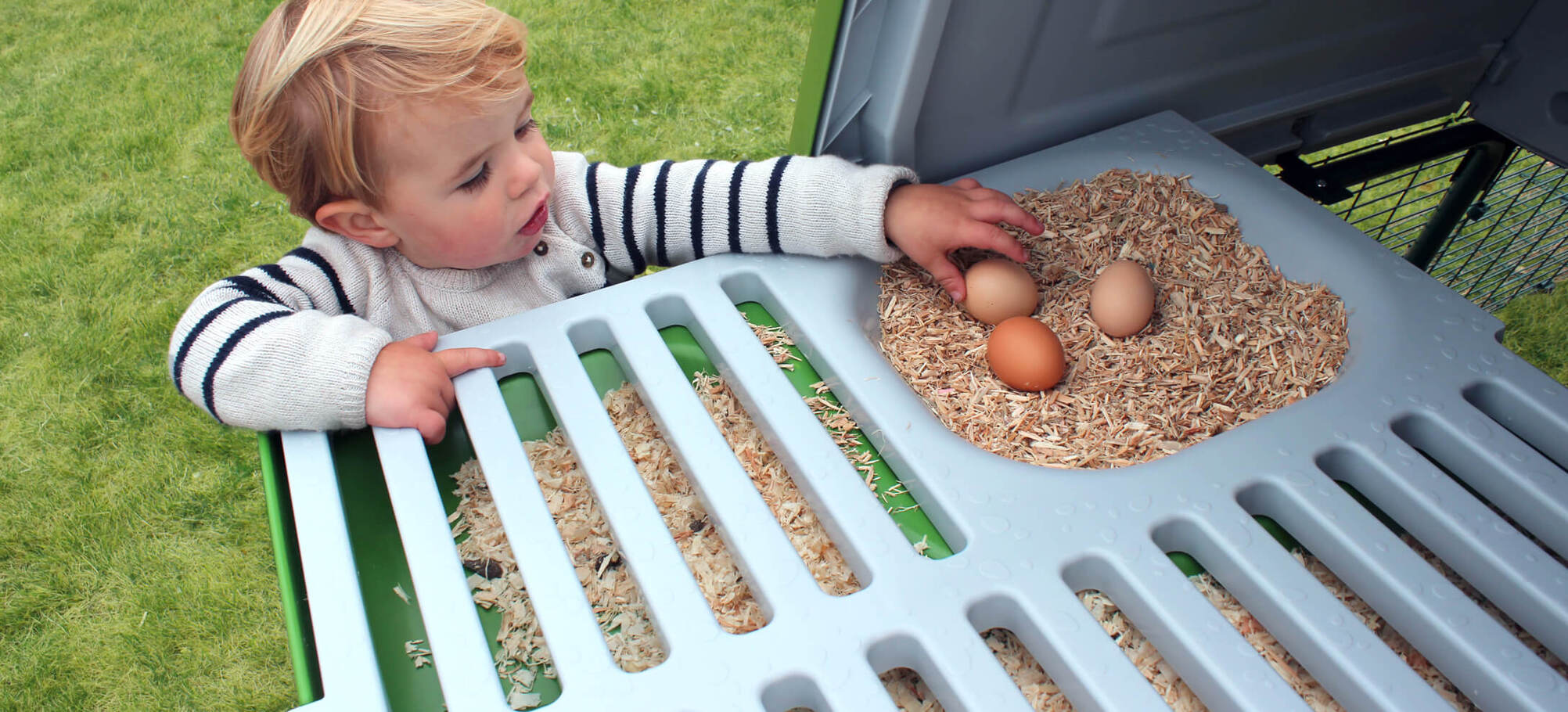
Enjoy collecting fresh eggs from your Eglu chicken coop!
A fresh egg every day – that’s just one of the best things about having your own flock of chickens in your garden. But it’s not that simple. For the private keeping of chickens, there are some legal frameworks and conditions you must take into consideration – and those may differ from country to country.
To receive the most accurate and timely information and policies to avoid obsolete and incorrect information, please always contact the responsible authority for a local law and/or ordinance regarding livestock and poultry or an official veterinarian as a first point of contact.
Do you need to register your chickens?
Depending on the country you live in, you might need to register your chickens. In some countries, like the UK or U.S., you must register your chickens within one month by using the compulsory registration form if you keep 50 or more birds in your premises. This is important, as if you don’t register your chickens, you’re breaking the law. The law also applies if you keep flocks made up of different species, – chickens, ducks, geese, guinea fowl, patridges, pheasants, pigeons or turkeys – and birds for the consumption of meat and eggs.
In Germany, every single chicken has to be registered directly on the first day with the responsible veterinary office and must be reported to the animal disease fund. This applies to all types of poultry. This is important in order to reduce the risk of spread of an epidemic quickly and efficiently.
How many chickens make a perfect flock?

To answer this question, one major consideration is how much space you have for your chickens and how many eggs you need.
As a mature hen lays about two eggs in three days on average, keeping three to six chickens will ensure you always have a steady supply of eggs for your family. However, if your family really loves eggs or plans to give eggs away occasionally, you may wish to consider expanding your flock.
In general, it’s good to start with at least three chickens – if there’s an unexpected death, you won’t be left with a lonely one. In a breeding flock, a rooster will need four to six hens.
Space requirements of chickens vary depending on the size and breed of the chicks, and how long you are free ranging the chickens during the day. Although it is recommended to have a minimum size of 2-3 square feet per hen, please keep in your mind, the bigger, the better!
Nevertheless, it is important to have an outdoor enclosure, like the Walk In Chicken Run, to keep your chickens safe from avian predators. Another good defense against unwanted “night visitors” is a chicken coop door. If you come home late in the evening and need an alternative way of closing them safely inside, an Automatic Chicken Coop Door is recommended. With the control panel you can set the automatic door so that it opens and closes the coop at a certain time or based on the rising and setting sun.
The Omlet Autodoor opens horizontally, meaning it cannot simply be lifted up when it is closed by predators, so you and your chickens can sleep peacefully knowing that you have the safest automatic chicken door in the world.
If you have ground predators, you can also protect your flock with an electric poultry fencing.
Do my chickens need to be vaccinated?
Different countries have different requirements for poultry vaccinations, so check with the government environmental website or a local vet for advice. However, there are some diseases you should be aware of and may consider vaccinating against, such as the Bird Flu (e.g. Avian Influenza), Newcastle disease and Marek’s disease.
Bird Flu can infect domestic poultry and other bird and animal species. In the worst scenario, if e.g. the avian influenza affects a flock, the flock has to be put down. These viruses do not normally infect humans. For more information, please visit our blog article What You Need To Know About Avian Flu.
The Newcastle disease can vary from mild to severe and unfortunately, there is no treatment for Newcastle disease yet – but when given between 14 and 21 days of age, a vaccine can help to prevent this disease. Newcastle disease is also transmissible to humans.
Marek’s Disease is caused by a chicken herpes virus and affects the chicken’s central nervous system. Like many herpes viruses, once an animal becomes infected, it will be infected for life. However, not all infected birds will get sick. This disease isn’t contagious to humans.
For the health and safety of your chicken and flock, and to prevent the risk of spread, it is definitely recommended to vaccinate them. Especially if you plan to sell or buy chickens, you need to vaccinate your hens.
And remember: always isolate new flock members for at least 30 days!
Do I need permission for chicken keeping?
Depending on where you live, some cities and towns have restrictions and regulations on chicken keeping, for example, the number of chickens that can be kept, the minimum and maximum size of the coop in which the chickens will be housed or a minimum distance to the neighbouring property. Some areas prohibit the keeping of roosters due to the extra noise; others require that all chickens be leg-banded for identification purposes.
However, you may also be subject to by-laws, lease conditions or the deeds to your house preventing you from keeping chickens, and there are rules that may apply to back-garden poultry keepers, so be sure to check your local restrictions before buying chickens.
In addition, you might want to consider your neighbours when raising chickens. Although lots of people will be won over with the promise of fresh eggs, it might be a good idea to check with your neighbours first, and assess your gardens to ensure you’ve done all you can to prevent your hens hopping over to their vegetable patch!
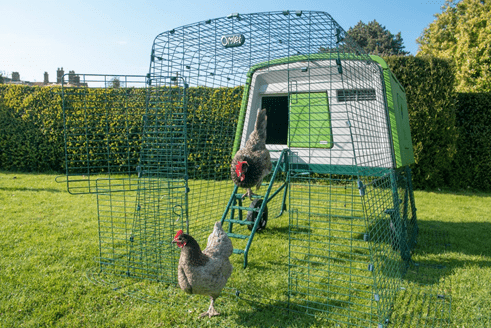
The Omlet Eglu Cube houses up to 6 large hens or 10 bantams!
What are other considerations of keeping chickens in my yard?
Some regulations require you to meet some minimum requirements. In Spain, for example, the legislative provisions stipulate, you need to keep the noise level as low as possible, the chicken coop must be well illuminated and regular veterinary care must be provided.
Most suburban councils will limit the number of birds you can keep or even prohibit roosters on residential properties due to the disturbance they could cause to neighbours.
Australia is an interesting example of how different local restrictions can be. In Victoria, residences with backyards can have a maximum of five chickens, whereas New South Wales allows no more than 10 chickens in residential areas. In Western Australia, owners can keep up to 12 poultry birds. Furthermore, it is prohibited to keep roosters in general in Queensland, New South Wales and Western Australia.
Even the height of the perch where your chooks sleep on is set at around 30 cm off the ground.
Although there are many different regulations andlaws when it comes to chicken keeping, there is one inevitable rule which applies to all countries and local areas: chickens need access to fresh bedding, food and water at all times!
Always be sure you are in accordance with local ordinances and up-to-date before embarking on your chicken-keeping endeavor, especially as policies and law can change. Obtaining information such as the correct local hen house keeping (farming method for laying hens) or the examination of species-appropriate hen houses is important, – each country has its own animal welfare requirements and regulations, and should not be ignored.
This entry was posted in Chickens
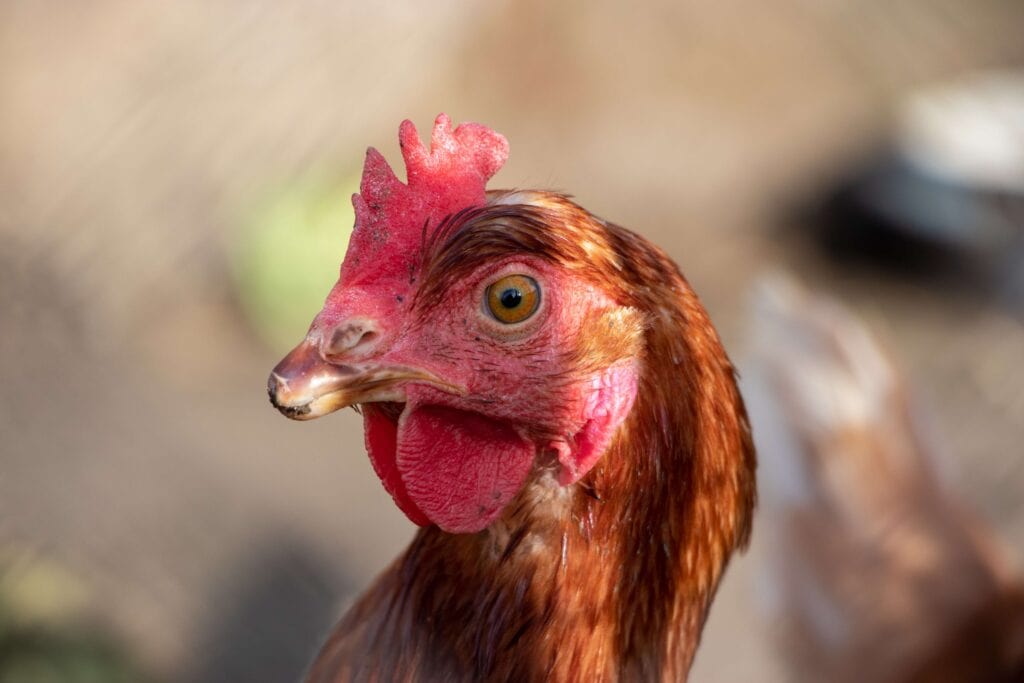








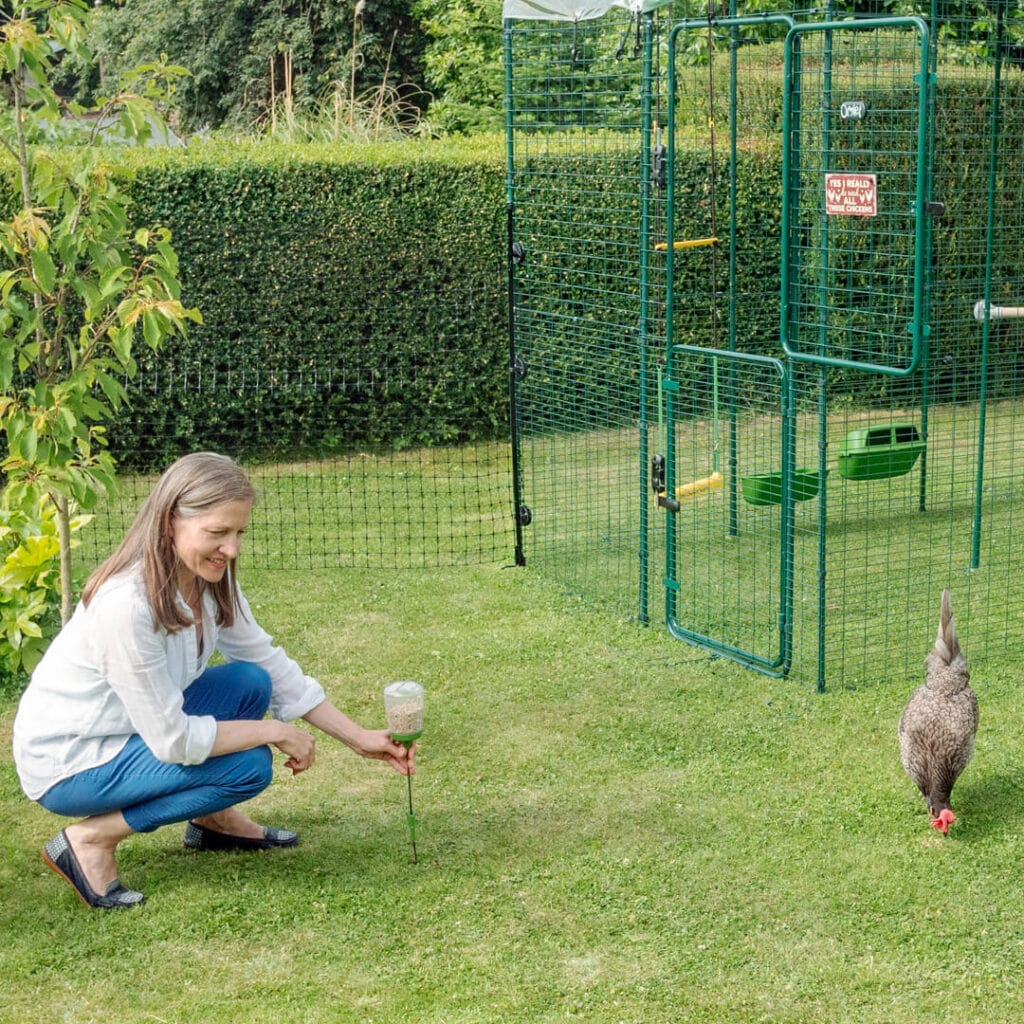


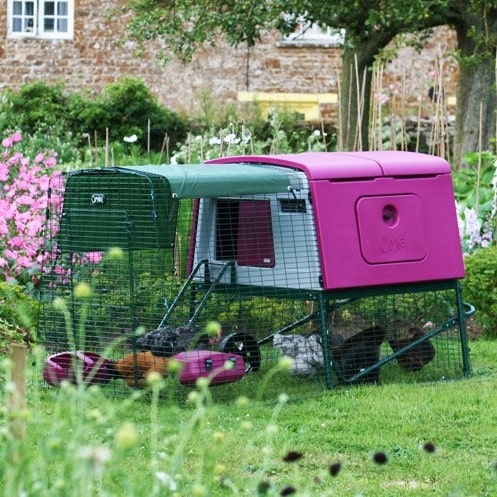

















 If you were to meet a species of animal for the first time and had to make an accurate guess about its diet, you would get lots of clues by looking at its teeth. The teeth of a dog, like the teeth of a bear, proclaim loud and clear that this animal is an omnivore – that is, one that eats both meat and vegetables. If you think of your dog as a domesticated wolf, you get a good idea of its natural diet.
If you were to meet a species of animal for the first time and had to make an accurate guess about its diet, you would get lots of clues by looking at its teeth. The teeth of a dog, like the teeth of a bear, proclaim loud and clear that this animal is an omnivore – that is, one that eats both meat and vegetables. If you think of your dog as a domesticated wolf, you get a good idea of its natural diet.
 1. Rabbits
1. Rabbits





































 Having some feathered friends in your garden who regularly lay eggs for your enjoyment – that sounds good, doesn’t it? But there are a few things to consider before raising and keeping chickens in your backyard. Whether your garden is suitable for chicken keeping or the actual costs which are involved… In this respect, we’re going to be egg-ucating you today about some advice and guidance!
Having some feathered friends in your garden who regularly lay eggs for your enjoyment – that sounds good, doesn’t it? But there are a few things to consider before raising and keeping chickens in your backyard. Whether your garden is suitable for chicken keeping or the actual costs which are involved… In this respect, we’re going to be egg-ucating you today about some advice and guidance! In addition, there are costs for the vet, which can hardly be calculated. The vaccination costs are still quite manageable, the vaccine itself is a maximum of
In addition, there are costs for the vet, which can hardly be calculated. The vaccination costs are still quite manageable, the vaccine itself is a maximum of  to keep your pullets safe. You can buy a pre-made coop or you can build your own.
to keep your pullets safe. You can buy a pre-made coop or you can build your own. In order to keep healthy and happy chickens it is necessary to have a safe outdoor area with plenty of space, where they can exercise, enjoy the sunshine and fresh air. Your chicks should be able to express normal behaviours, such as scratching, foraging and dust bathing.
In order to keep healthy and happy chickens it is necessary to have a safe outdoor area with plenty of space, where they can exercise, enjoy the sunshine and fresh air. Your chicks should be able to express normal behaviours, such as scratching, foraging and dust bathing. 





